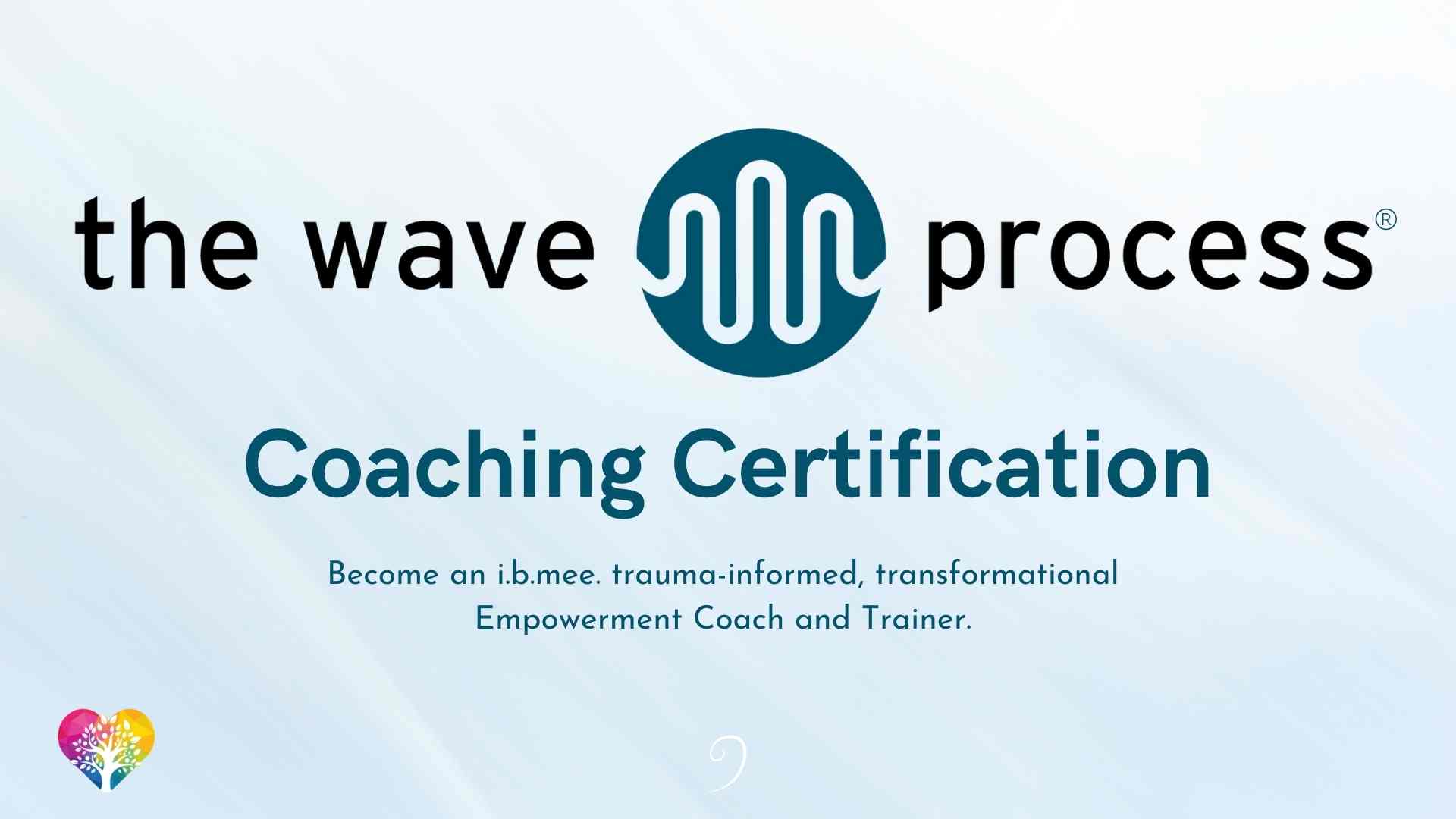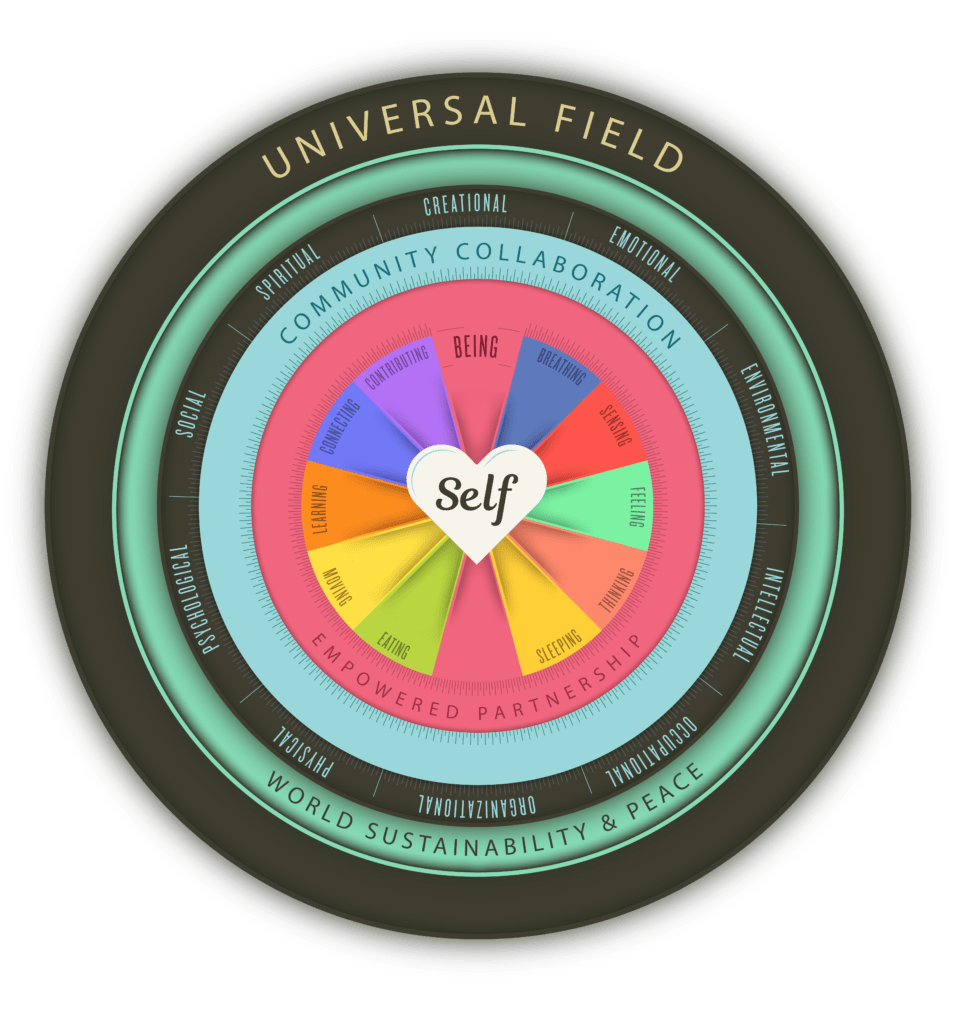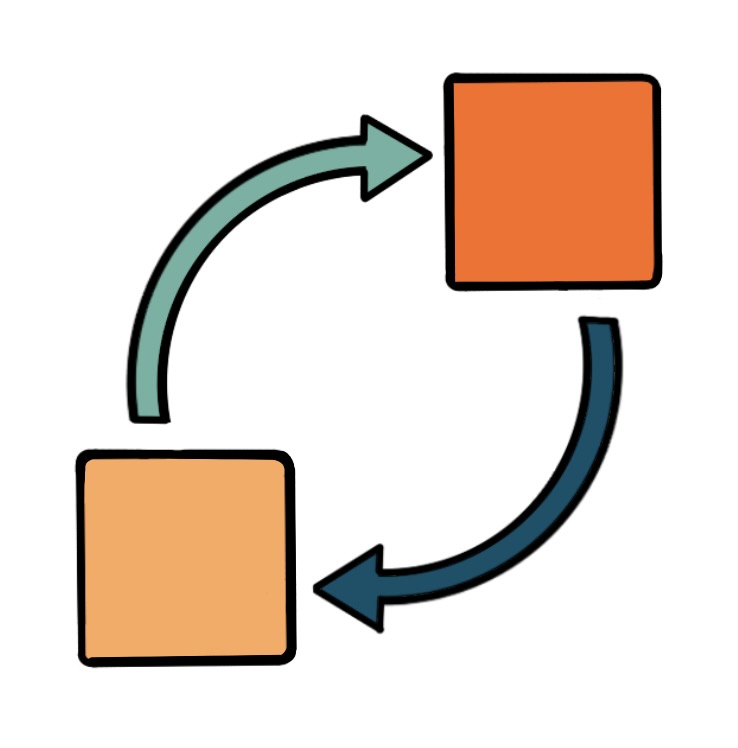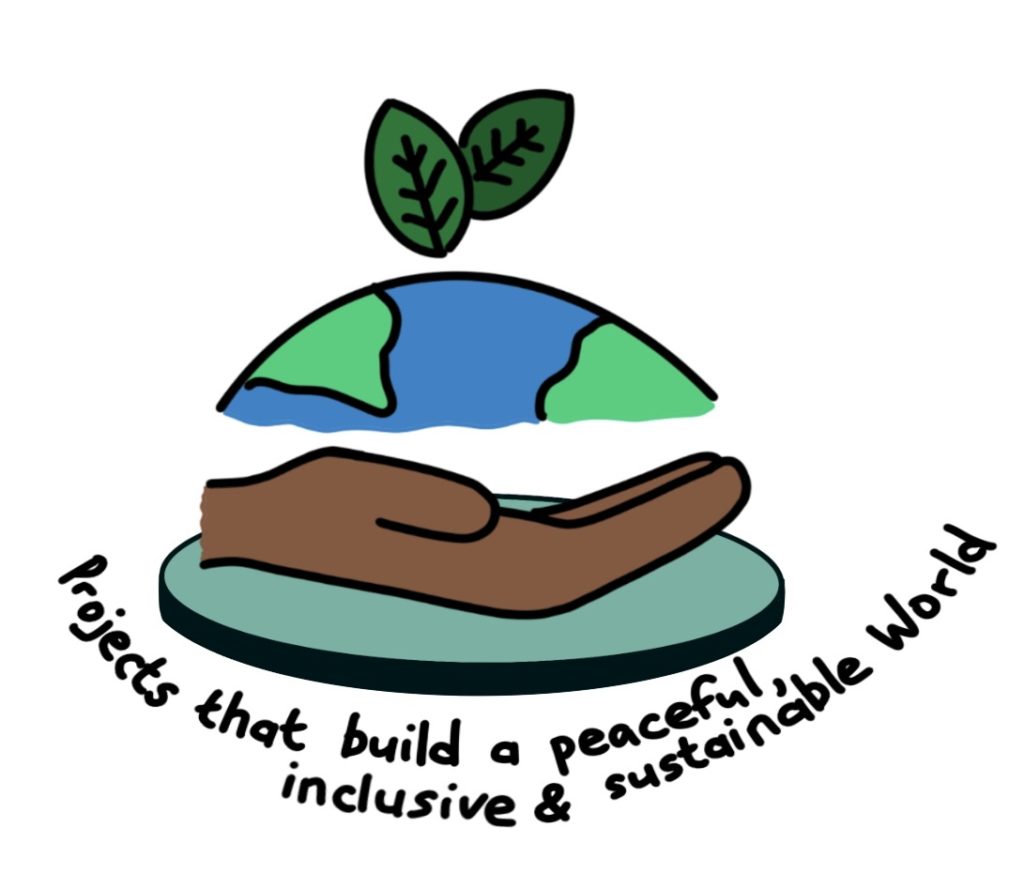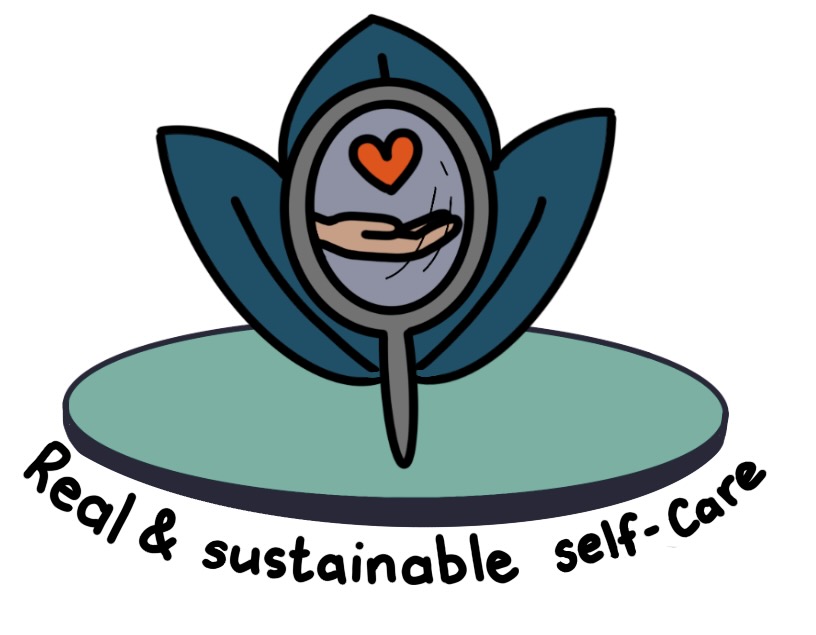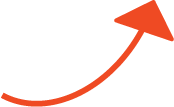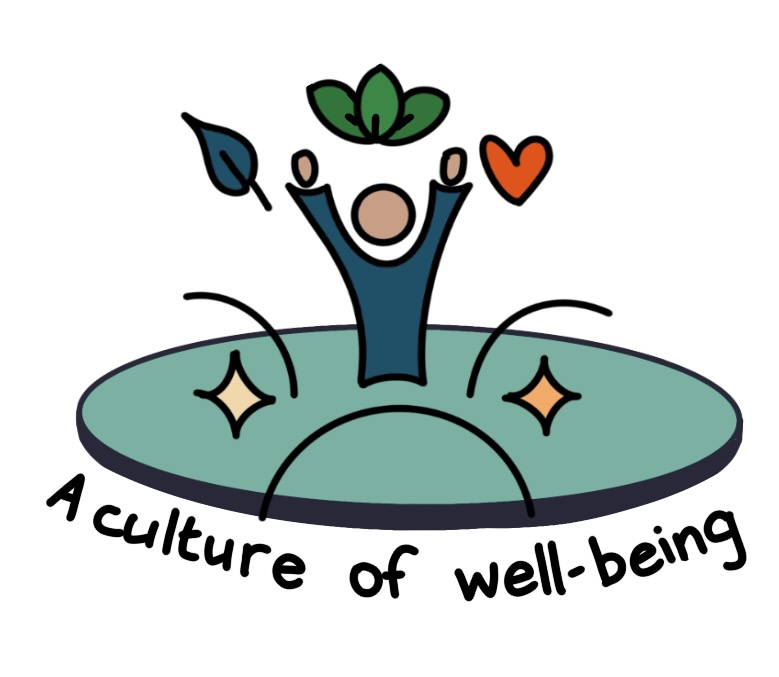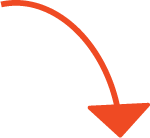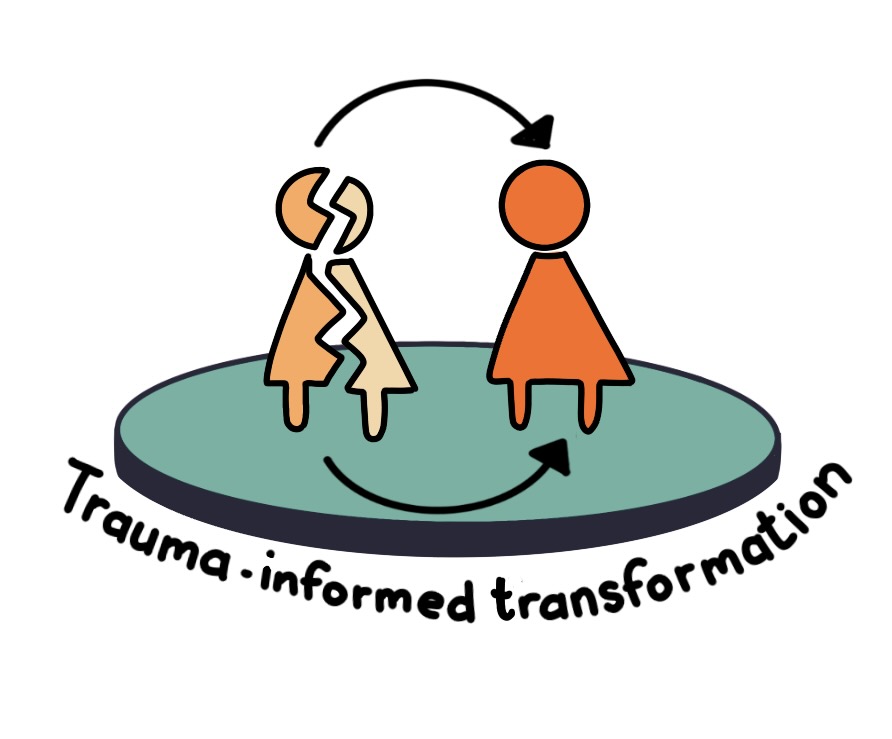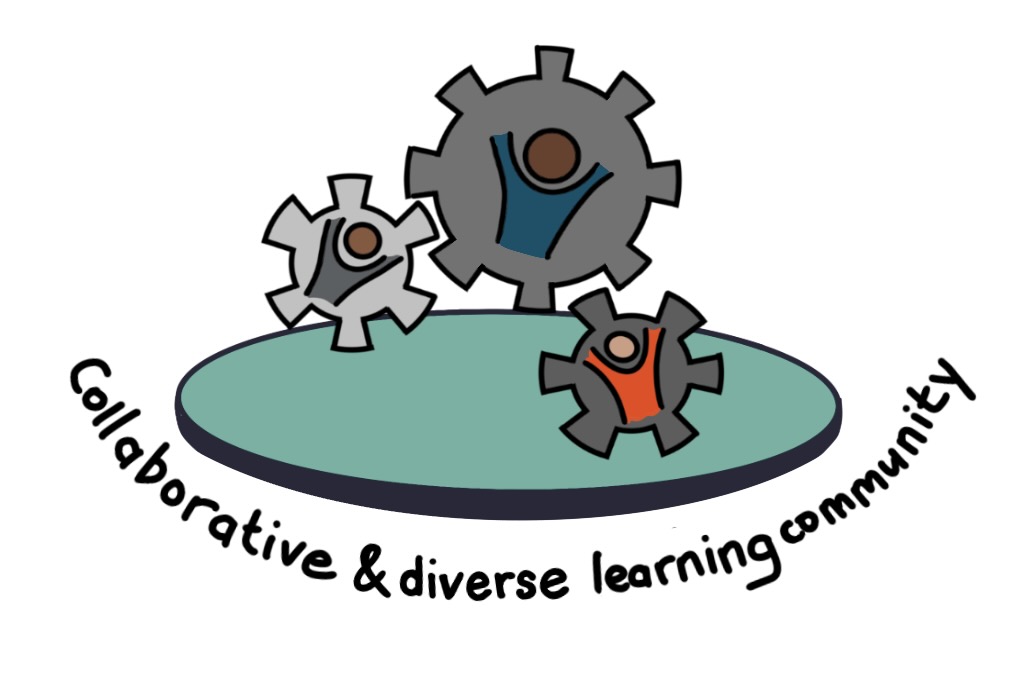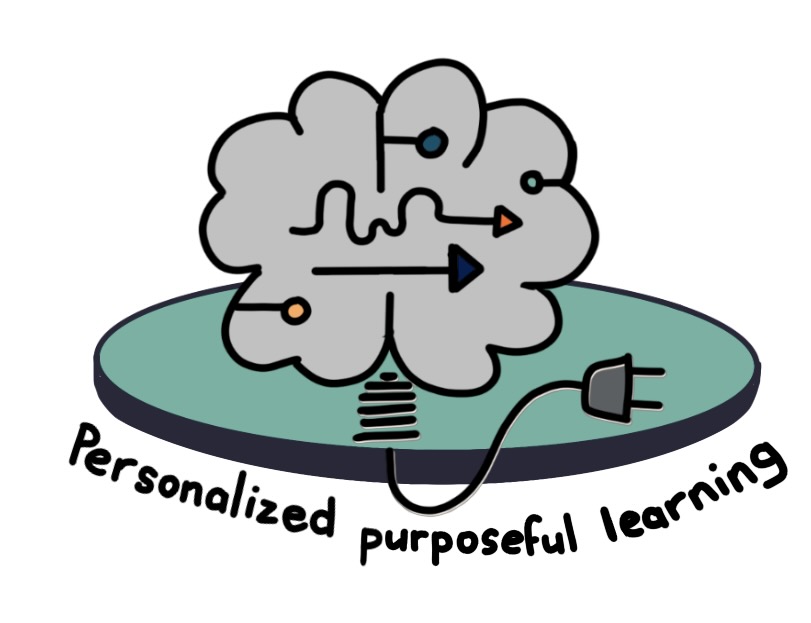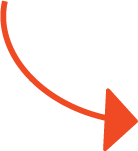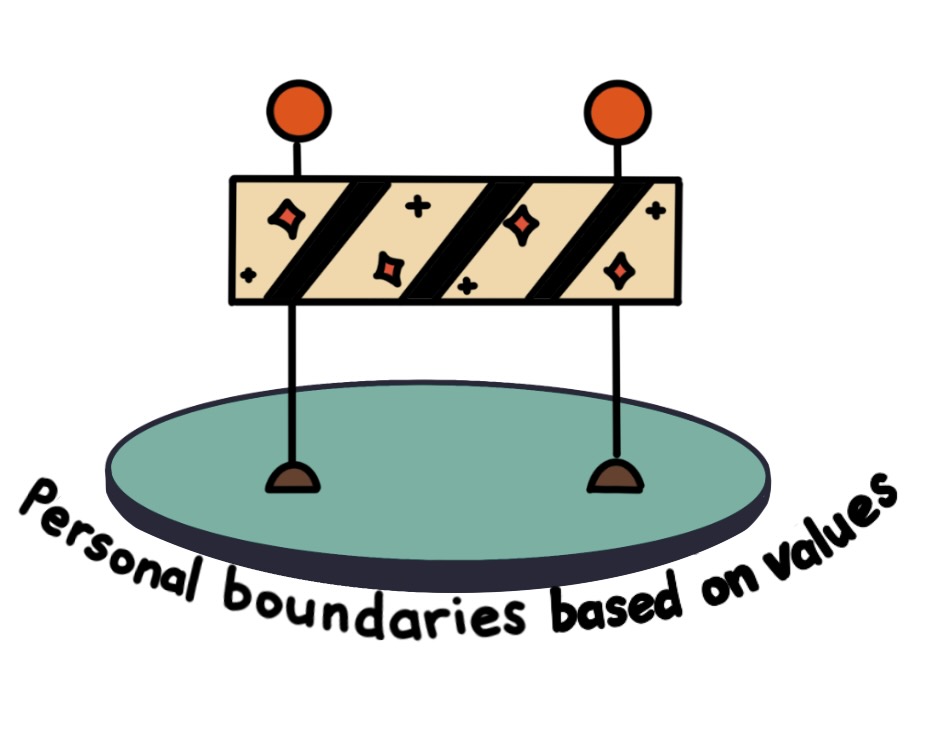The Empowerment Education System
To give a new-generation of young people what they truly need to thrive in our society, a new-paradigm of learning and educating must be implemented within the next 10 years. The Empowerment Education System gives us a framework and principles to shift,- through an inside-out, top-down, integrative, approach to change. Based in a trauma-informed, transformational coaching approach, it provides a powerful process that starts with meeting each individual (student and educator) and school where they are and gives them the space and support to effectively move into a “21st century and beyond” unique approach to learning that works for every young person no matter what is going on in their environments at home, in their community, or in the world.
The EE System is based on 30 years of evidence-based and evidence-informed research whose concepts and skills we have studied and implemented ourselves to ensure its effectiveness (reliability and validity). This research is always being tried, tested and updated.
The Empowerment Education Model (EEM) gives educators a new-paradigm framework to build and implement their healthy and empowering classroom and school environment in their own, unique ways.
- The EEM focuses on what research tells us are the 4 fundamental domains of thriving (wellness/well-being, empowerment/resilience (trauma-reducing), heart-centered leadership, and legacy/purpose.)
- It includes 5 main new-paradigm principles of thriving at the CORE of the system and over 25 secondary principles to guide curriculum decisions, teaching methodologies, environmental set-up, and interpersonal relationships.
It includes 10 Empowerment Education Domains of Learning with progressive skills practices and tools within each. From life and well-being coaching to personalized learning, these 10 domains are included in a new-pardigm, thriving learning environment. See below for specific descriptions.
Uses one of the most up-to-date, interactive, new-paradigm Learning Management Systems on the market today. You will create your own home page called MyAdventure. It includes access to learn-on-your-own modules, live experiential web classes and events, personal coaching, live weekend retreats, live workshops, and a collaborative, trusting, fun, professional learning community you will want to connect with for a lifetime.
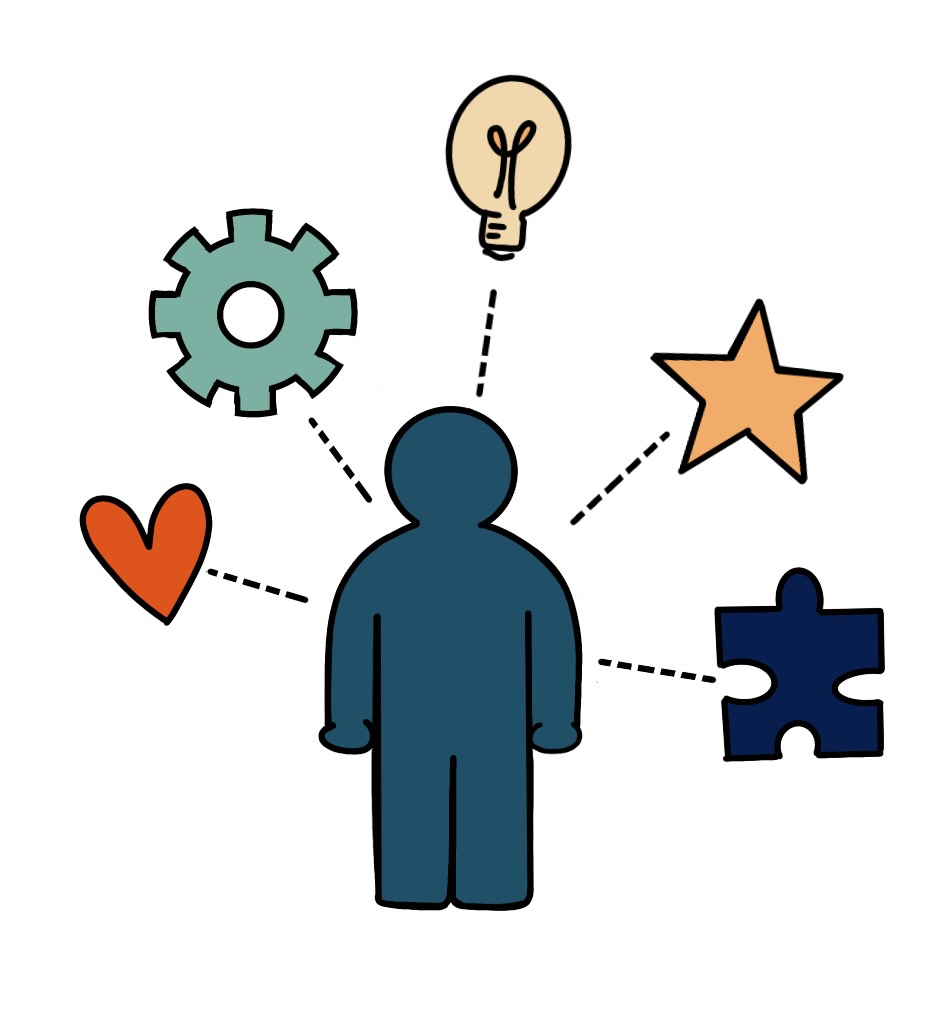
Experience it.
Step by step personal journey.
You can’t give what you haven’t experienced. We offer stepping stones to success just for you so you learn and practice the tools and concepts with yourself in your own learning and living environments so you can more easily set up, facilitate and coach others to thrive.
Choose your unique track by clicking on Teacher, School Leader, Parent or Student, Certified Coach or Community Member. Then move through different Levels of Progression each consisting of 5 to 6 Adventures. You will go on a personal transformational journey as soon as you sign up for any Adventure. Costs range from free and donation-based to $225/month. (Sliding-scale accounting is used. Scholarships are available.) As you progress to higher and higher levels of new-paradigm teaching and coaching mastery, you will experience everything you need to know and implement in Empowerment Education.
Create it.
Develop your "unique flavor" of a healthy and empowering environment.
Once you begin to experience the new paradigm, you naturally begin to create new ways of learning, leading and living in your environments. The Empowerment Education Model is effective across all ages, all classroom settings, and alongside any curriculum. Teachers, School Leaders, and Students develop their own version of the Empowerment Education W.E.L.L. pillars and principles in their classrooms and schools. So no matter where you are in your learning process, you are creating your highest and healthiest visions of new paradigm learning.

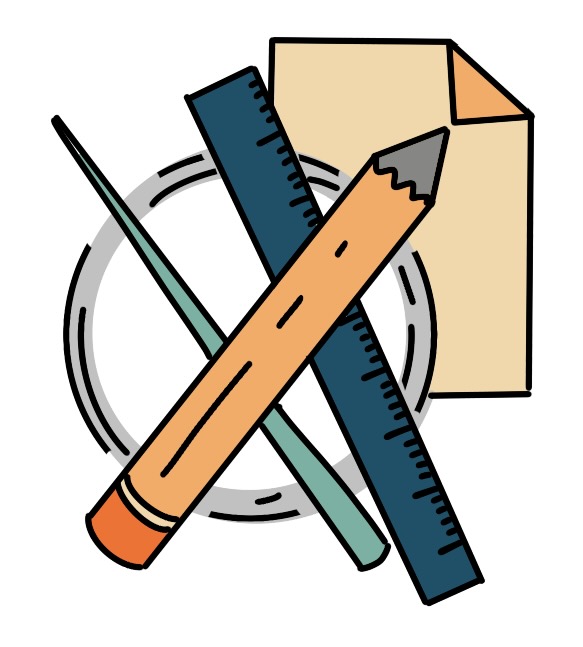
Do It.
For real.
You will have lots of practice sessions with trained peers and professional Empowerment Education trainers and coaches so you gain the confidence to create a new-paradigm, healthy and empowering environment where all individuals have the best chance of reaching their full potential and thriving. You will have ample opportunities to get feedback from your professional trainers, coaches, and trained peers as you implement your unique Empowerment Education System in your own life, classroom, school, or home. By the end of your training, you will have created a powerful, trusting professional new-paradigm learning community who you will engage with for years to come.
Shift It.
Naturally.
As you implement your new paradigm, healthy and empowering learning environment with trusting connected relationships, everyone and everything naturally begins to positively transform. When the shift is based on foundational principles of educating students, it works. Enjoy watching it shift.
The new generation of young people will automatically integrate into a seamless journey of learning. By providing a new flexible learning path that puts the human-being and the connection of all life at the CORE of learning, it will be the critical step for the health and well-being of our young people and the regeneration and sustainability of a peaceful, resourceful planet that provides every resource we need to thrive.
..more resilience, excitement, engagement, well-being, peace, focus, and fun! = thriving

10 DOMAINS of the

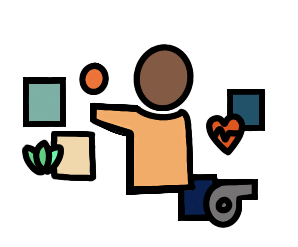
1. Life and Well-being
Coaching
As a civilization, we are undergoing an incredible transformation in the way we learn, work, build relationships, and ultimately live our lives. This is sparking a need for personal transformation that gives us a clear understanding about who we are, what our purpose is, and how to live a truly fulfilled life that adds to the greater good of society and our planet. The demand for professional life and wellness coaching is at the highest it has ever been in history, and the profession is still growing at incredible rates. The success of coaching occurs because the “coach” is formally trained on how to bring to life the brilliance and wholeness that are already inside of all of us. Once a person understands and practices how to bring their own positive vision of their life into reality, and is able to break through challenges that are standing in their way, then they are more able to step into a healthy life of fulfillment, peace and well-being…and support others in doing the same.
The education system is just beginning to tap into the power of this type of coaching for students and their teachers, school leaders, and even parents. Educators already have a natural desire to help our youth, so they are perfect models for becoming life and W.E.L.L.-Being coaches in the classroom/school. Here at i.b.mee., we know what happens to students, whole classrooms, and schools, when a school leader and teachers are trained in the skills of professional life and well-being coaching for education.
For a decade, we have been training and coaching groups of educators and students in the Empowerment Education System so they can learn and use an effective new-paradigm, cutting-edge way of coaching and communicating. Moving this system to an online hybrid learning method, more educators and students can become certified as Empowerment Education Coaches which we call for short Empowerment Coaches. Our education coaching methodology is based on a simple 5 “Power Question” framework and a trauma-informed coaching and communication method called the WAVE Process® which gives the Empowerment Coach a natural blueprint for helping anyone (including themselves) move from low brain, reactive fight, flight and freeze states (emotional triggers) into high brain, connected, calm learning states.
Empowerment Coaching creates consistent, connected, and trusting relationships that naturally empower others to build well-being, confidence, motivation, ease and fulfillment while contributing their gifts and talents to their school, community and world. It allows students to learn and grow on a deeper level. As an Empowerment Coach, you will be uniquely equipped to solve problems, help students and peers resolve conflicts, and free up energy and time for self-care. Using the art and science of the “coach approach” as the foundational communication process when “teaching” unleashes individuals’ intrinsic motivation and self-discipline to learn, grow and contribute (without the need for manipulation or control), as well as their ability to become more emotionally regulated and build solid, trusting connections in all their relationships.
Students who become Empowerment Coaches can coach themselves through self-judgment, lack of confidence and any challenge they may have. They show up as better friends for their peers and know how to effectively talk to adults so they stay true to themselves.
Our life and well-being coaching-approach training stair steps educators from cultivating the awareness of what the coaching-approach is and why it is important, to becoming certified as a trauma-informed, transformational Empowerment Coach in the classroom and school.
The life and well-being coaching-approach is the new-paradigm foundational communication method and mindset that is needed to create thriving learning environments where all students no matter their challenges, have the best chance of reaching their full potential. It also gives educators more confidence in how to handle behavioral challenges in the classroom.
The Empowerment Coaching-Approach Training consists of 4 Basic and 4 Advanced Adventures.
(1) The Life and Well-being Coaching Approach INTRO – 4 modules
(2) The Listening from the Heart Event: Provides the experience of the core practice of coaching. This event gets you prepared for “being coached”.
(3) Coaching 4 Educators – The Gift of 4 life and well-being coaching sessions with a professional, credentialed coach. (yes really) (Valued at $800)
(4) Empowerment Coaching Basics ($40 – valued at $395)- Participants earn an Empowerment Coach-Approach Basics Certificate at the end of this Level of Progress.
After this, you can move into Level 3 of the Empowerment Education System Training where you continue your advanced coaching-approach journey to become an expert at coaching yourself and integrating the coaching-approach at the highest level as you become a certified as a coach in the classroom/school.
More Reading:
https://www.psycom.net/self-care-101
https://www.sciencedirect.com/science/article/pii/S0020748919302093 and www.selfcareresearch.org
https://www.bmj.com/content/365/bmj.l688
"If you put all of your energy into monitoring people, you will limit their creativity."
Steve Jobs
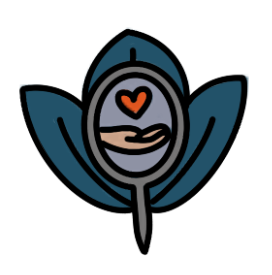
2. Real and Sustainable
Self-Care
The self-care revolution is beginning to gain even more momentum. It is estimated that the 2022 global self-care & wellness market is around 1.5 trillion dollars and growing. ¹ Consumers are starting to view wellness through a much broader and more sophisticated lens, encompassing not just fitness and nutrition but also overall physical and mental health and appearance.² We are slowly understanding that ignoring self-care and well-being doesn’t work, that to be energized, fulfilled, happy and healthy, we must focus on making our priority self-care, prevention and wellness. The vision of the International Center for Self-Care Research is a world where self-care is prioritized by individuals, families, and communities and is the first line of approach in every health care encounter.³
From our research, the ability to know, love, trust and be yourself is the central principle of thriving: living a healthy, fulfilled, successful, and happy life. The more we grow in our own feelings of self-love, which means to think and feel good about ourselves, and do positive things that bring us to higher and healthier visions of ourselves, the more we practice self-care. When we love ourselves, we want to take care of ourselves.
Self care is about the capacity to meet physical, physiological, psychological, and self fulfillment needs. (4) Self-care has the largest influence on how physically and mentally healthy we are. This is not woo-woo anymore. It is scientific. And the more we practice self-care, the more we can support others to do the same.
How do we practice self-care?
To truly love ourselves, we learn to spend time exploring who we are, why we are alive, and what we love, and then learn to have the courage to try it out no matter what. We learn to be ok with challenges and making mistakes as we realize that “mistakes” are important “learnings”. This is the key to decreasing stress and anxiety. The more we love ourselves and build our self-worth and confidence, the more we won’t worry about what other people think even if we are “learning” through mistakes. We are more peaceful, centered and focused on what is important to us and our community. Our toxic stress levels decrease or are non-existent. We move away from blaming ourselves and feeling “not good enough” which are some of the beliefs that underscore stress. Toxic stress (a recurring stressful feeling usually in the center of your chest or gut, like you are being chased by a bear all the time) is linked to chronic diseases such as cancer and heart disease, and a weakened immune system, to name a few.
So why not create systems that focus on real and sustainable self-care and eliminate toxic stress? We must, if we want to eliminate the Threatening 3 Epidemics of chronic disease, suicide and violence which kill a majority of our human population each year, including children and young people. We must continue moving away from a sick-care system into a well-care system. Yes, thank you for our amazing, talented physicians and nurses who save lives when we are sick and could die. However, to prioritize wellness and prevention is the key. This is something we have to learn how to do. We have never done this as a society. We must continue to shift our systems into systems of self-care.
Shift the Education System into a Self-care and Wellness System
Self-care is not selfish or an indulgence, it is a state of being where one respects and loves themselves so they are healthy to give their gifts to their communities and support others in doing the same. An integrated self-care system into the current education system would set the groundwork for our children to not do anything to hurt themselves or others. It would allow them to build the preventative habits that would make them physically and mentally healthy. It would give them the stamina, energy and confidence to bring their talents to the world. If we spent more time and money on self/wellcare, we would lessen healthcare costs and early mortality rates caused by the Threatening 3 by billions. Shifting the education system from a priority on external goals around grades, and achievements, to a priority of connection to ourselves and an internal definition of success, the more we will have peaceful and kind collaborations with others where creativity can soar. More would get done in less time and with more ease. Toxic stress would be minimal.
The Empowerment Education system is a self-care, well-being system at its heart. It gives us the framework to begin to experiment and build your own versions of how to integrate 11 dimensions of self-care/well-being into the schools and classrooms. There is not one way to do it. We must begin by believing that it is central to not only our children and young people thriving, but to our communities and world thriving.
As you take an Adventure through our program, you will experience self-care based on the most sound, innovative research. If you choose to, you will positively transform your own well-being. Once you have this journey, you will naturally integrate this self-care system into your classroom and school. There is no going back.
²https://www.psycom.net/self-care-101
³https://www.sciencedirect.com/science/article/pii/S0020748919302093 and www.selfcareresearch.org
“When you recover or discover something that nourishes your soul and brings joy, care enough about yourself to make room for it in your life.”
Jean Shinoda Bolen
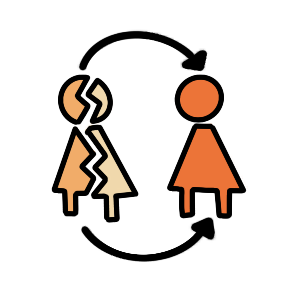
3. Trauma-Informed Transformation
50% of children in Asia, Africa, and Northern America experienced violence last year.¹
The number of 2-17 year olds who experienced the most severe forms of violence in the past year is estimated to be at least 64% of children in Asia, 56% in Northern America, 50% in Africa, 34% in Latin America, and 12% in Europe.²
Over half of all children in the world – 1 billion children ages 2-17 years – experience violence every year.³
Every year in the U.S., more than 3.6 million referrals are made to child protection agencies involving more than 6.6 million children.4
We are in an epidemic of the unintentional disempowering treatment of young people. Experiencing violence in childhood impacts lifelong health and well-being.5
During a traumatic event, the survival brain can take over and knock critical thinking offline. This pattern can continue later on in life if the person is still experiencing the effects of the event, or something in their environment unintentionally reminds their nervous system of the disempowering event.
There is unequivocal evidence supporting that young people need safe, stable, supportive relationships and healthy and empowering environments to have the best chance of reaching their full potential, especially during times when they feel scared, unsure, or not OK. 6 The human brain and nervous system are hardwired for connection and belonging (“I feel seen, heard and valued for who I am.” “You like me, and I am a part of something.”). So, when children experience Adverse Childhood Experiences (ACEs) or developmental trauma without safe, stable and nurturing care, they can develop disempowering beliefs about their self-worth and abilities. This causes increases in their sensitivities to environmental stimuli and the fight, flight or freeze response.7 (They get triggered more easily.) Continuously living in a reactive, fearful state without trusting, consistent, and nurturing connections results in increases in toxic stress which leads to decreases in healthy mental, physical and emotional development and the inability to form functional relationships.8 (“The Threatening 3”.)
In addition, the inherent “systematic trauma” from the archaic, industrialized, one-size-fits-all current educational system and philosophy is not helping. Its ill-informed, out-dated daily process of learning is not designed to deal with the adverse effects of ACEs that two-thirds of American students are coming to school with.9 Our current public school educational philosophy is actually unintentionally causing primary and secondary trauma in our students and as a result they are struggling to feel at ease and reach their full potential in school, career and life. Students have not only developed some degree of toxic stress from their home or neighborhood lives, but also from the current education system which is causing them to develop disempowering beliefs about their abilities to learn and grow and that high levels of stress and overwhelm are the norm. “We are actually in a belief’s gap, not an achievement gap.” 10
The education system also does not allow schools to prioritize building wellness, leadership or life skills that would support them in navigating real life more easily and be a more healthy citizen. The ramifications of this robotized, competitive, unhealthy, outcome-based system has created a current generation of disconnected students and teachers who are stressed, depressed and unhealthy and are too unaware or scared to say or do anything about it. Thousands of high school students are dropping out of school, don’t fit in the current system, and teachers are quitting. What if the reason students and teachers are leaving has little to do with themselves, but that the system they are learning and teaching in is not working?
SOLUTION
Young people spend an average of 1200 hours in school every year! When we ask secondary students if they value or like school, they most often state something to the effect, “Not really but I don’t have a choice; I need to make the grade, pass the class, to get a good job to be successful in life”. How would it feel if you had to wake up every day and do things you didn’t enjoy? This outcome-focus creates toxic stress, depression, anger and exhaustion.
It is imperative that students and teachers are offered a healthy and empowering educational experience where they are excited and motivated to attend because they can’t wait to have another experience of how their gifts and skills will come alive and contribute to their personal growth and the greater good NOW. The old “survival of the most academically and athletically fittest” educational framework needs to be displaced by a healthy and empowering one where everyone thrives.
It is time to offer an educational system and philosophy where all the people working, learning and playing there, “are fully at ease with themselves and with their colleagues, brimming with enthusiasm and energy. Nobody wears a mask or pretends to be someone they are not. Everybody is using their talents to the fullest and seems incredibly alive.”11
The future of any society depends on its ability to foster the healthy development of the next generation. Preventing and responding to child maltreatment requires a multisectoral approach. The earlier such interventions occur in children’s lives, the greater benefits to the child (e.g. cognitive development, behavioral and social competence, educational attainment) and to society (e.g. reduced crime). The World Health Organization recommends interventions to build a positive school climate and violence-free environment, and strengthen relationships between students, teachers and administrators.(12)
Central to the new-paradigm of Empowerment Education is creating trauma-informed Empowered Partnership relationships. It is critical that all educators and their students know how to effectively transform their disempowering ways of being into healthy and empowering thoughts, feelings and behaviors. Participating in our program, you will first learn how to do a trauma-informed transformational coaching approach with yourself, and experience the shift. Then as you integrate this approach with students, you will have an internal, visceral understanding of what the inside-out shift really is and how effective it is in naturally bringing the freedom, confidence and skills out in all students, no matter their physical, emotional and learning challenges.
1https://www.cdc.gov/violenceprevention/childabuseandneglect/vacs/onebillion-children.html
2https://www.cdc.gov/violenceprevention/childabuseandneglect/vacs/onebillion-children.html
3https://www.cdc.gov/violenceprevention/childabuseandneglect/vacs/onebillion-children.html
4Hillis S, Mercy J, Amobi A, et al. Global Prevalence of Past-year Violence Against Children: A Systematic Review and Minimum Estimates. Pediatrics. 2016;137(3):e20154079
5https://www.who.int/news-room/fact-sheets/detail/violence-against-children
6https://developingchild.harvard.edu/ and https://www.cdc.gov/violenceprevention/childmaltreatment/essentials.html and https://www.ncbi.nlm.nih.gov/pmc/articles/PMC5178870/ and http://www.sciencedirect.com/science/article/pii/S1054139X13002449 and http://www.sciencedirect.com/science/article/pii/S1054139X13002723 and https://www.cdc.gov/violenceprevention/pdf/essentials_for_childhood_framework.pdf
7CDC, Adverse Childhood Experiences (ACE) Study Adverse Childhood Experience Study https://www.cdc.gov/violenceprevention/acestudy/index.html
8https://www.samhsa.gov/capt/practicing-effective-prevention/prevention-behavioral-health/adverse-childhood-experiences and https://vetoviolence.cdc.gov/apps/phl/resource_center_infographic.html and https://www.ncbi.nlm.nih.gov/pmc/articles/PMC4090696/ and https://www.ncbi.nlm.nih.gov/pmc/articles/PMC4415131/ and https://www.npr.org/sections/health-shots/2015/03/02/387007941/take-the-ace-quiz-and-learn-what-it-does-and-doesnt-mean and https://www.aap.org/en-us/documents/ttb_aces_consequences.pdf and https://www.rwjf.org/en/library/infographics/the-truth-about-aces.html and http://pediatrics.aappublications.org/content/early/2011/12/21/peds.2011-2663 and http://www.columbia.edu/itc/hs/medical/residency/peds/new_compeds_site/pdfs_new/PL1%20new%20readings/the_lifelong_effects_ofearly_childhood_adversity.pdf
9Unlocking the Door to Learning: Trauma-Informed Classrooms & Transformational Schools, Maura McInerney, Esq. Senior Staff Attorney, Amy McKlindon, M.S.W. Education Law Center
10Dr. Steve Perry Principal, Keynote Speaker at the KnowledgeWorks’ Experience Conference, March of 2017
11Laloux, Frederick; https://www.youtube.com/watch?v=gcS04BI2sbk and http://www.reinventingorganizations.com/uploads/2/1/9/8/21988088/140305_laloux_reinventing_organizations.pdf and http://www.reinventingorganizations.com/
"Now, every time I witness a strong person, I want to know: What darkness did you conquer in your story? Mountains don’t rise without earthquakes."
Katherine Mackenett
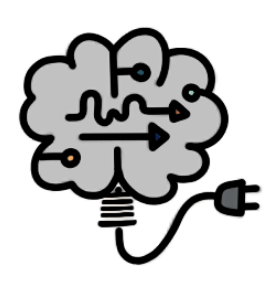
4. Personalized Purposeful Learning
In the new-paradigm of education, personalized, purposeful learning environments are important to naturally motivate, engage, and empower students. As the student gets older, they become more and more responsible for what they want to learn and experience, and the educator knows how to stimulate that drive.
There are some school districts in the U.S. and around the world that are beginning to implement personalized learning processes and plans as a priority. 1-2 More and more research is being accomplished around this domain of education and finding its inherent efficacy. This is great news. For a learning environment to be set up for thriving, the student must be the agent of their own learning. Children should not have to be manipulated to learn. They are hardwired to naturally want to grow and experience new things. So why do students tend to stop engaging in learning by 3rd grade?
There are many reasons, but one of the top reasons is that someone else has taken over their learning. By the habits and processes of the education system, students learn to please the system because they believe it is their way to “success”.
It is critical that preschool through college-age students understand how they learn and what excites them the most, and be given ample time, opportunity and resources to pursue their path. When this happens, students find creative ways to share who they are at their core and make a difference, even if it means they have to accumulate their own resources.
Personalized learning environments are highly learner self-regulated, have transparent and actionable near-real-time data, provide various structures for student voice and feedback, and integrate purposeful supports for embedding the principles of Universal Design for Learning (engagement, representation, action and expression) at the cornerstone of practice. Personalized learning requires a shift in instructional practice on behalf of both the teacher and the learners. 3-4
The following student-centered definition of personalized learning informed this study:
In a personalized learning environment, learners actively participate in their learning. They have a voice in what they are learning based on how they learn best. Learners have a choice in how they demonstrate what they know and provide evidence of their learning. In a learner-centered environment, learners own and co-design their learning. The teacher becomes their guide, mentor, teacher and coach on their personal journey. 5
Goal setting is a central construct and critical aspect of personalized learning. 6 Students’ short, mid, and long-term goals, (i.e. university goals), along with action steps to achieve these goals, are “critical elements”. While personalized learning is a relatively new concept, the notion of goal setting is not.
“Goal setting is often studied as a form of self-regulation (Carver & Scheier, 2012), the success of which is mediated by learner beliefs and various regulatory processes. It is well established that implicit theories of learning influence self-regulation (Dweck & Leggett, 1988), with strong evidence that an incremental theory of growth (i.e., growth mindset) contributes to successful self-regulatory processes (Nussbaum & Dweck, 2008). When self-regulatory processes such as goal setting occur in contexts that are supportive and emphasize mastery rather than performance or competition, goal achievement is more likely to occur (Burnette, O’Boyle, VanEpps, Pollack, & Finkel, 2013).” 7
In the new paradigm, goal setting works best in personalized learning if personal exploration and the promotion of cross-disciplinary, 21st century skills are both integrated into the goal setting process.
This means that teachers know how to engage students in exploring their personal interests and launch student-driven projects. (Identity Exploration)
Students are then given the time and space to propose personal goals tied to their interests or for them to explicitly identify goals related to their projects.
The teacher and peers provide guidance and feedback on the goals the student proposes using guidelines.
The teacher and student collaborate during the period of goal refinement to tie the student goals to a set of cross-disciplinary and life ready skills.
The resulting goals are then used to inform subsequent learning experiences and a lens for reflection and further planning.
One of the most powerful ways to integrate purposeful personalized learning is using the art and science of what we call, life and learning coaching. It is designed to naturally bring out the inherent purpose of individuals and the self-agency of learning, growing and contributing all under the umbrella of well-being.
In our program, as you learn the concepts and skills of becoming and Empowerment Educator, and learn the Empowerment Coaching-approach, you will naturally be using an evidence based innovative approach to goal setting that we call Vision Mapping. There has never been one time in 10 years of implementing this process that the teacher and students were not reeling with excitement of what they experienced. Their ability to connect with themselves and trust their inner knowledge and purpose immediately begins to expand. Their confidence in who they are grows. The classroom and school culture shifts into a highly trusting, open, inspirational, creative, and collaborative learning environment for everyone. Purposeful, personal learning plans become easy to incorporate into any environment and with any student.
Vision Mapping can be easily integrated to any type of portfolio grading system that can be integrated into the standard grading system. (…although we believe the standard grading system needs to, and will shift).
1https://www.tandfonline.com/doi/abs/10.1080/00098655.2019.1571990
2https://education.vermont.gov/student-learning/personalized-learning
3https://journals.sagepub.com/doi/abs/10.1177/0162643416660835
4 https://udlguidelines.cast.org/
5https://www.tandfonline.com/doi/full/10.1080/19404476.2017.1392689
6https://www.tandfonline.com/doi/full/10.1080/19404476.2017.1392689#
7https://www.tandfonline.com/doi/full/10.1080/19404476.2017.1392689
“Tell me and I forget, teach me and I may remember, involve me and I learn.”
Benjamin Franklin
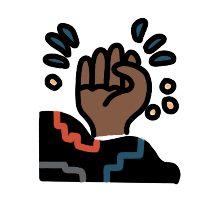
5. Breakthrough Challenges with Resilience
The Gen Z generation has grown up in an education system that was designed to get them through curriculum as quickly as possible. “Don’t touch anyone.” “Sit still and listen.” “Just turn it in and you will get points so you will pass.” These comments are heard frequently in schools everyday. Teachers are at the mercy of the system and must strictly focus on curriculum. There is little to no time to find out what students need and really listen to what they have to say about their experiences, especially if they are experiencing challenges. Students who are not able to reflect on present moment challenges and practice resolutions, have more challenges dealing with these problems later on. Educators want to have more time to connect with students through their challenges.
The system has forgotten (or never realized) that challenges are normal and not getting “it” right is how we deeply learn. If a student is having a problem with another student, this is the time for them to learn how to work it out. If a student doesn’t feel like sitting, it is the time to help them become aware of why this is so and not make it wrong. If a student is not turning in assignments, and we keep telling them to turn it in, they never understand what is really causing them not to turn it in and come up with their own solutions. Our young people have had little to no time to practice and build resilience so they are empowered to take their next move on their own.
“Resilience depends on supportive, responsive relationships and mastering a set of capabilities that can help us respond and adapt to adversity in healthy ways,” says Dr. Shonkoff, director of the Center on the Developing Child at Harvard. “It’s those capacities and relationships that can turn toxic stress into tolerable stress.” ¹
In the face of challenges, resilient educators and their students can more easily accept the present moment, communicate needs and personal boundaries, stay more self-regulated, connect to choices, and make positive decisions that work for everyone. They stay on track with their purpose and goals and can be themselves more often. The more resilient they are, the less anxiety and stress they have when everyday challenges do arise.
Resilience is not grit. Grit usually means to “tough things out”. Resilience builds more awareness of why something might be happening, the learning that is being gained from it, and the outcomes of the solutions. For resilience to increase, the nervous system must begin to eliminate toxic stress in the body so the body, mind, heart and brain feel safe.
The Empowerment Education program focuses on how to build resilience through training our teachers and school leaders (and students) in our trauma-informed, social-emotional learning, and life-skills package which also includes a transformational coaching-approach methodology. Not only do you learn how to connect with yourself and others more easily, even during conflict and stress, but you learn how to build the specific positive references needed to shift and sustain resilience. This allows you to meet any challenge with less stress and more patience and understanding, see the gift in it, and do something more connected and empowered. Learning resilience is crucial and we specialize in it. Our young people and educators are only as fulfilled as their ability to be resilient to challenges.
When educators know how to break through their own internal and external challenges with more ease, and build resilience, they are more able to set up learning environments to help students to do the same. When students know how to break through their own internal and external challenges, and build resilience, they will be empowered to more confidently step into their highest and healthiest visions for themselves, their relationships, and their communities, and become a peaceful, contributor to our world. What if we all were doing this?
"Show me someone who has done something worthwhile, and I’ll show you someone who has overcome adversity."
Lou Holtz
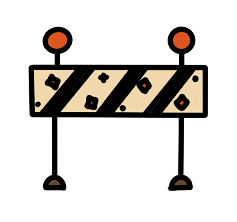
6. Set Personal Boundaries
Based on Values
Setting personal boundaries is a critical life skill that allows us to stay true to what we value. It is linked to well-being, health and happiness.1-7 It is when we use our energy and/or words to communicate life priorities and values, especially when they are being challenged. The goal of setting boundaries is to be able to communicate clearly what we need and want to ourselves when we are not following our own well-being, and to others when they show up in ways that are not honoring our values. Most of the time, other people don’t realize that they are not respecting our boundaries, so hence the need for clear communication and making “requests”.
Unfortunately, setting personal boundaries and making personal requests based on our values is quite challenging. It is a skill that hasn’t been purposefully taught in our school communities. In fact, it is more likely that over the decades, we have actually been discouraged to speak up and voice what we want, especially when it counteracts what our parents, teachers or mentors believe, say and do. (We don’t blame adults at all; they all are doing the best they can in systems that are stressful!)
In addition, there are many different forms of violence, bullying and disrespectful behaviors occurring more and more in our homes, neighborhoods, schools, and communities. Sometimes it feels safer to ignore things rather than speak up for what we believe. But in the end, this only makes us feel more unsafe, frustrated, or angry.
Setting personal boundaries based on values is a skill that must be modeled and practiced as soon as babies are born. Infants start out letting parents know with facial expressions, energy and emotions, what their boundaries and priorities are. “Feed me.” “Change me.” “Hold me.” “Play with me.” Parents, who had good role models or have had some good parent coaching, know that it is important for babies to express and then be heard by their caregivers. This is how they trust that their needs will be taken care of. As babies brain development grows, they are able to practice asking for what they need as they begin to talk. Caregivers learn to allow children to express, even if it is different from what the caregiver believes. The adult helps the child understand their values and priorities and at the same time, the adult must listen to what the child needs to say. This is when the adult must be connected to their own values and priorities, and what they can and cannot give in to, and learn to help the child understand these boundaries. At the same time, the adult is helping the child learn to communicate their boundaries and get the win-win. This is when the adult must “pick their battles”.
So for young people to learn to set boundaries from their values, the adults around them must learn how to do this and then give their children the time and space to set their own boundaries too. No more, “do as I say, not as I do.” or “You must do it, or you are grounded.” or “To respect me, you must do what I say.”
When children are not modeled and allowed to communicate their beliefs, values, and feelings, and set their own boundaries, they will become less confident in themselves and their decisions. They will believe that they have to:
- Be people-pleasers to be liked and respected.
- Do as they are told, no matter what.
- Keep what they really believe and need to themselves.
How to set good boundaries with others.
Having a safe, stable, nurturing relationship growing up means that we were able to set boundaries with our caregivers. (or else it would not be a safe, stable, nurturing relationship.) Connected relationships help us build resilience and adaptiveness through challenges to have the confidence and assertiveness so we can set boundaries to stand for who we are and what we need and want. This is not being egoic or indulgent, but being true to yourself which is a necessary skill of thriving.
3 Main Ingredients
- Have a connected relationship with an adult or peer who models respectful communication, lots of silent listening, making requests, and getting the “win-win”.
- Get to know yourself, so you are aware of your values and priorities and what constitutes well-being for yourself. What do you value? What is important to you? What are healthy ways of living for yourself?
- Notice when your values and priorities are being broken and practice being assertive, and respectfully speak up for what you want and need. You learn to make choices that feel right, not because you feel like you have to, or fear of consequences, or to be a good person, but because if you don’t step up and stay true to your values, you know that you will be disappointed with yourself and not as happy with your life.
Sometimes, when you and another can’t agree, or are triggering each other, you could get really upset or hurt. When this happens, setting boundaries and staying connected is way more challenging. The goal is to learn to work on getting a “win-win” if this person is important to you. This is another skill that comes into play when setting boundaries. Sometimes you have to give a little and compromise some on a value to get a win-win that feels good. But, to be effective, the compromise must still uphold your values.
But when you absolutely can’t compromise because the boundary being challenged is a deal breaker, (i.e. abusing/hurting others, or spending money you don’t have), then sometimes relationships end.
What happens when students have values that are different from their teachers/parents?
We must learn to allow others, no matter their age, culture, race, or abilities to be seen, heard and valued especially when their point of view, beliefs and values are different from ours. We must ask students what they are feeling and thinking, and what they are needing at the moment. This does not take that long. We call this Quick Coaching; taking just a couple of minutes to ask a couple of very powerful questions. The goal is to allow your students to have a voice and express what is most important to them and then, bottom line ask, is there any way to get a win-win?
Through Empowerment Coaching and using the WAVE Process® Connection Blueprint, you will learn how to model all of this. Teachers and School Leaders will learn to do this with your students, peers and themselves. Students will learn to do this with adults, peers and themselves.
1https://www.ncbi.nlm.nih.gov/pmc/articles/PMC7786197/
2https://connectepsychology.com/en/2017/05/16/the-importance-of-setting-boundaries/
3Setting Boundaries: By Rebecca Ray
4https://www.jhseonline.com/article/view/879
5https://lernercenter.syr.edu/wp-content/uploads/2020/06/Lee-1.pdf
7The Need to Say No: The Importance of Setting Boundaries in Love, Life; Jill Brooke
sc
“A trusting relationship is one in which neither party silences, sacrifices, or betrays the self and each party expresses strength and vulnerability, weakness and competence in a balanced way.”
Harriet Lerner

7. Highly Connected
Relationships
Current research in neuroscience and epigenetics have concluded that the most important ingredient in supporting a young person to grow up having the best chance of reaching their full potential is having at least one highly connected relationship. This means that this adult not only unconditionally sees, hears and values the young person with acceptance and non-judgment, but guides and mentors them to make sense of the challenges in their world. Young people need to know that when “bad” things happen to them or around them, it doesn’t mean that they are “bad”. This builds a positive internal dialogue that coincides with to improved self-care, resilience, well-being and health.
Our program focuses on how to build the highly connected relationship or what we call the “EMPOWERED PARTNERSHIP”. It is easy to have good relationships and stay connected when everyone is being “nice”. But what happens when people are emotionally triggered and not so “nice”? …staying connected and “nice” tends to go somewhere else.
Connection is the ability to truly see, hear and value someone, no matter how they are showing up. It doesn’t mean that the behavior doesn’t need to change if it is hurting someone else or not effective, but we can learn to stay present and safe, while setting personal boundaries, mentoring, coaching and teaching.
We specialize in training and coaching teachers and school leaders (and students) in the art and science of connection that ends in the participants being in empowered partnerships with their peers and their students.
When young people receive safe, stable and supportive connection, they build confidence that who they are is unique, worthy and adds value to life. They are more fulfilled and satisfied with their life. (More to be added.)
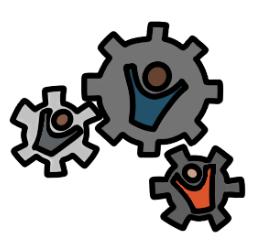
8. Collaborative and Diverse Learning Community
Over the last decade, there has been the beginning of a shift into school environments that emphasize collaborative and diverse learning communities. The research surrounding the benefits of this framework and approach goes well beyond the individual and into communities and our world. We are beginning to understand the power of learning as a “social and cultural enterprise” where collective knowledge is central, rather than just as a cognitive perspective where knowledge resides in people’s minds. 1 When individuals gain new knowledge, and they share it among each other, it expands the collective knowledge. When we advance collective knowledge, individual learning increases in empowering ways. 2
At the core of collaborative and diverse learning communities in education is the vast amount of research on learning organizations, ‘where people continually expand their capacity to create results they truly desire, where new and expansive patterns of thinking are nurtured, where collective aspiration is set free, and where people are continually learning how to learn together.’ (p.3). 3
In the new paradigm of education, it is important that leaders adapt this research using its principles and create schools as types of learning organizations where the connections between students personal and interpersonal learning, and how the classroom (and school) learns collectively, are integrated and prioritized as one of the keys to transformation and success. We use the term collaborative and diverse learning communities (CDLC) to depict classrooms functioning as a type of learning organization within the larger learning organization of the school, and then of the school district.
CDLC’s can be integrated into the school structures and processes to enable students (and their teachers) to learn and grow as individual trusted knowledge sources, and at the same time operate genuine communities that draw on a shared vision and goals, and the collective capacity of everyone to contribute to learning. 4 Both the content learned and the processes of learning from outside resources are shared and become a part of the collective understanding. Members of the group and the collective knowledge and skills of the group are considered important resources. Co-construction and negotiation of ideas, common language, projects, content and goals are made from the community members. CDLC’s provide a framework to exchange ideas and move to mastery from each individual student’s needs, desires and perspective.
CDLC’s naturally promote educational equity for all students, cultural content integration, prejudice reduction, equity pedagogy/inclusive practices, and an empowered school culture and social structure. They allow students to direct their own learning, communicate and work with people from diverse backgrounds and views, and learn to reason through complex issues and challenges. Learning goals can begin from each student, and then expand as the community comes together to discuss their goals further. The collective goals are emergent. In CDLC’s students and teachers learn each other’s strengths and weaknesses in respectful, accepting ways.
CDLC’s have their foundation in collaborative learning. There are numerous benefits of collaborative learning. They typically result in higher achievement and greater productivity, more caring, supportive, and committed relationships; and greater psychological health, social competence, and self esteem. More specifically, collaborative learning has been shown to have the following benefits.5
Social benefits
- helps to develop a social support system for learners; training students in the social skills needed to work cooperatively
- builds diversity understanding among students and staff
- establishes a positive atmosphere for modeling and practicing cooperation
- reduces violence in any setting by understanding differences and learning how to resolve social problems
- develops learning communities that last outside of class and beyond school
Psychological benefits
- student-centered instruction increases students’ self esteem
- cooperation reduces anxiety
- develops positive attitudes towards teachers
- reduces classroom anxiety created by new and unfamiliar situations faced by students
Academic benefits
- promotes higher level thinking skills such as critical thinking, problem solving and decision-making
- develops students’ oral communication skills
- involves students participating actively in the learning process, developing curriculum, learning processes and class/school procedures
- increases self-management and self-discipline
The Shift
For 200 years, billions of students globally have been through a system of education whose primary goal was to transmit knowledge from a “teacher and textbooks” into the heads of the students. Information gathering, studying and projects are primarily accomplished in silos, with learning tested by regurgitation of information. Talking is inhibited, and the sharing of knowledge and working on projects together is sparse. This approach to learning is narrow minded, boring, controlling, and exhausting, -all characteristics that are in stark opposite of a positive and inspiring learning environment. We wonder why young people are so physically and emotionally challenged.
In addition, this old approach doesn’t take into consideration the diverse backgrounds and needs of students and their teachers, as it continues to play a role in reproducing inequality among student learning. In many countries, with a deepening ethnic texture, interracial tension and conflict, and an increasing percentage of students who speak a first language other than English, making multicultural education imperative. It is estimated that by 2042, ethnic minorities in the US education system will reach 50%.6
It is very important that educators understand how to integrate the principles of CDLC’s into their classrooms and schools. At the same time, they must learn how to model, facilitate and coach social and emotional skills so students learn to trust each other to be able to openly express and share what they are learning. A diverse student body has arrived, so creating an atmosphere where students respect each other’s differences needs to develop. Empowerment Coaching and the WAVE Process® inherently do all of this and more. Becoming a coach promotes connected relationships through mainly a trauma-informed coaching approach. This allows both the teachers and students to be sensitive to the needs, beliefs and feelings of each other.
Empowerment Coaching allows educators to interact with increasingly diverse students, all who possess multiple social identities, so they can all learn at high levels.
Coaching allows the teacher to better orchestrate student-directed activities and confidently facilitate individual and group communication, helping students to gather resources to support the ideas and needs of their projects. Students who are coached, learn to coach each other, and themselves. Which positively enhances learning communities. Coaching students supports them to learn how to use their time to make a difference, build a positive identity, and build more confidence in mastering skills even when they “fail”.
As educators learn to become Empowerment Educators and become life and learning coaches, they are well-equipped to facilitate a learning communities approach, where students take on different roles and pursue individual interest toward common goals. Educators, as Student Empowerment Coaches, understand how to support students in bringing out their individual expertise and identities without ever “telling” them to do anything. They coach their students individually and in groups to collaboratively set up processes to learn and share knowledge. With every project, the students’ roles change, so everyone gets a central role at some point. This allows them to learn to lead from the front, the back and the side. (Coactive Leadership, 2010)
With a new brilliant and diverse Alpha generation beginning to enter school, shifting into collaborative and diverse learning communities will cater to many different types of learning styles. But no matter their learning style, this new generation will highly benefit from experiential, immersed, interactive and social learning, multi-tasking frameworks, a little structure built into an emergent curriculum, and learning through technology, which can all be integrated through CDLC’s.
1Learning Communities in Classrooms: A Reconceptualization of Educational Practice
2Emerging approaches for supporting easy, engaged and effective collaborative learning
3http://citeseerx.ist.psu.edu/viewdoc/download?doi=10.1.1.475.9451&rep=rep1&type=pdf
5Benefits of collaborative learning
6The Light in Their Eyes: Creating multicultural learning communities
“We learn from the company we keep.”
Frank Smith

9. A Culture of
Well-being
In the Empowerment Education Model, there are 10 cultural dimensions of well-being that are brought to life in every learning environment. They are key to consciously building a new-paradigm, healthy and empowering culture of well-being where everyone thrives.
Our program supports school leaders and teachers to know how to set their learning environments up in a positive way so that the 10 cultural dimensions are transparent, simple and clear and all work together. When one is focused on, the others improve automatically. (More coming soon!)
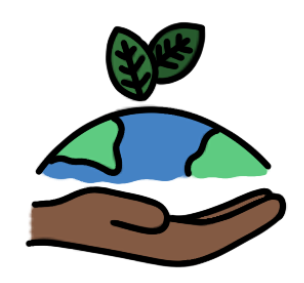
10. Projects that build a peaceful, inclusive and sustainable world
Students and their teachers and even their parents are becoming more clear every year that learning academics in a bubble outside of the real world does not work. Students are memorizing facts and equations and getting other people to do their work for them just to get a grade. How much time is wasted going through the motions of memorizing things just to forget them a day later. You know this is true. But we keep ignoring this. Learning must be meaningful and we say it all the time but yet we change nothing. Teachers are a victim of this system, scared to do anything different in fear of getting fired. It is time to shift this. How can we integrate project that matter, for the betterment of our world, our communities and each other.
In our system, you will discover how you will do this. (More coming soon!)
Learning Adventure descriptions


Level 1 Adventure
Our Voice Counts
We need people like you who are tired of seeing teachers, school leaders, parents and students overwhelmed and stressed about school and learning. If you are ready to see thriving students and teachers, and shift the old system of education, and do something more about it NOW, JOIN US FOR THESE LIVE GLOBAL MONTHLY ZOOM EVENTS. Your participation goes a long way whether you join us once or many times. We are excited to meet you!
Our archaic education system is on its way out and we must be ready for what its going to shift into!
In this participatory event, you will hear many others from people all over the world sharing what it was like for them to learn in a healthy, empowering and positive environment.
You will walk away with how important your own learning stories, big or small are (they are all vitally important), while experiencing how sharing and listening to these stories will be an energetic force to support the shift.
Your stories will become a part of a bigger project that is creating the New Universal Declaration of Global Education. What you contribute matters!
At the end of this event, you can join the new Declaration of Education Team where meetings are held quarterly in a roundtable, World Cafe setting to take the next steps in the top-down shift of the education system together.
- No fees. Donations are welcome.
Level 1 Adventure
The Foundation of
Empowerment Education-
The SHIFT
We are in the process of creating a short film/documentary to support educators in understanding the foundational research, concepts and principles of a new-paradigm of learning and educating young people. The information and research going into this film takes the place of a 5 hour course! We definitely know how busy educators are so we are doing our best to streamline things!
The Foundation gives you the answers to these questions.
- What are the Threatening 3 epidemics of our young people?
- Why are young people struggling so much?
- What is developmental trauma?
- What do young people need to thrive in school, career, relationships and life?
- How does the education system add to the challenges and trauma of young people?
- Why are our educators struggling? What do they need?
- What is the system shifting into?
- What is the new-paradigm of education?
- How do we turn-around a losing education system that is filled with so many amazing educators?
- What is Empowerment Education and how is it connected to all students and teachers THRIVING?
We welcome and thank you in advance for any donations for the creation of this film. We can’t wait!


Level 1 Adventure
Tell Your Education Stories
We need your own school stories, the good and the not so good. They really make a difference. When you take 15 minutes out of your whole life to share your anonymous story with our research team, you will be supporting a study that will help give the world reliable (true stories) and valid (how often these stories are the same) information to help shift the education system into a healthy and empowering system so all students and their teachers are W.E.L.L. and thrive.
- The information you provide goes towards solidifying the principles of the new Global Declaration of Education.
- From your true stories, we synthesize the principles of a healthy and empowering system of learning.
- The more information we have, the more it adds up and we can really make a difference!
Level 1 Adventure
Great Education Minds Podcast
Shifting the public K-12 education system takes dedication, motivation, participation, and above all, new information. 30 TO THRIVE podcast brings you that knowledge, the knowledge of a movement already in the making. The evolution from an old paradigm system to a new one has already begun. Join Meg Hanshaw PhD and her powerful guests who are already contributing to the new-paradigm SHIFT!
i.b.mee. is dedicated to serving as a central hub of the education system shift. Our podcast brings you the knowledge of great minds who have powerful programs, best practices, empowered schools, or research that are working to help students, teachers and school leaders thrive. We are not stopping until we all can be a dedicated voice to bring a wave of educational transformation.
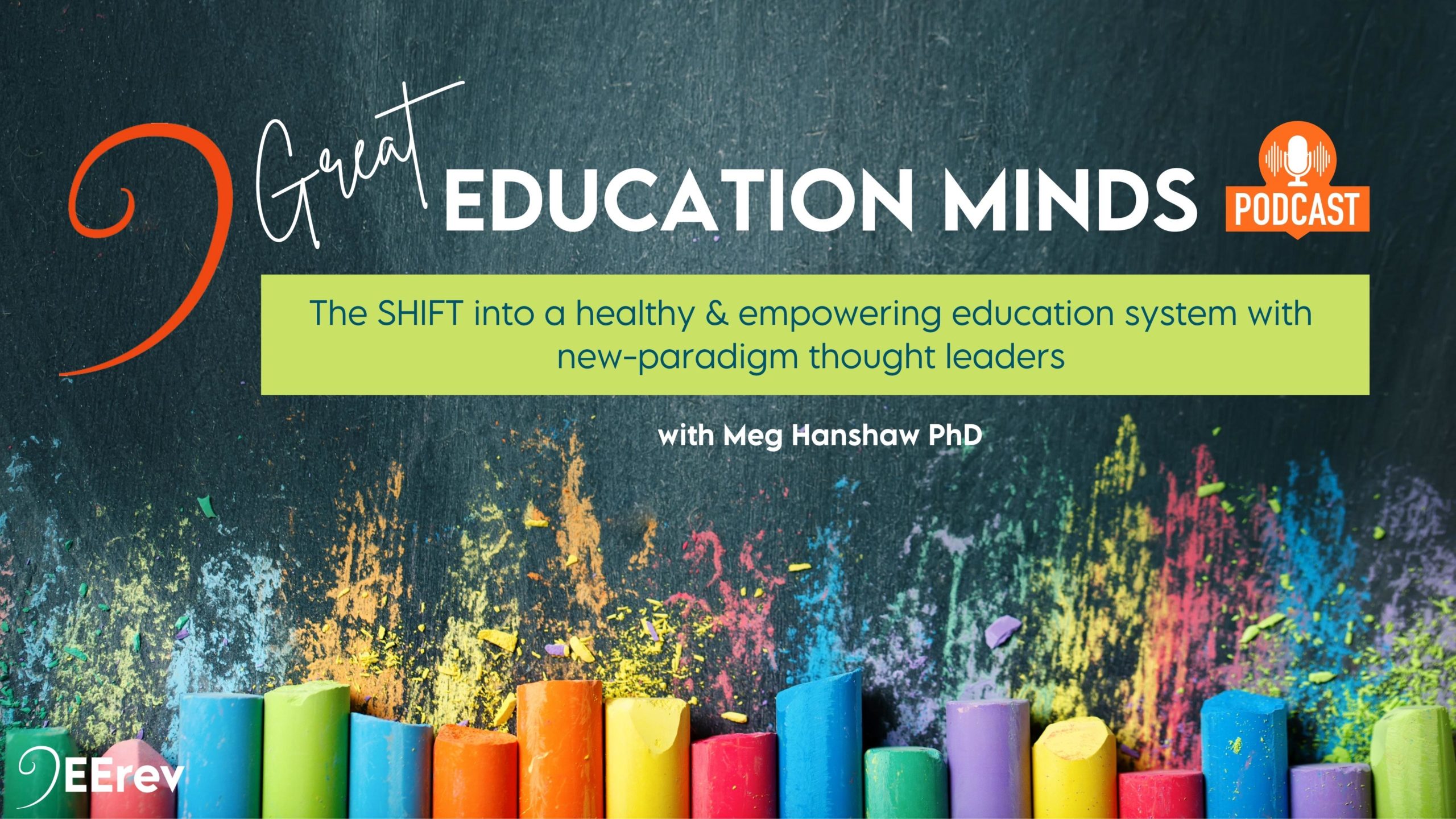
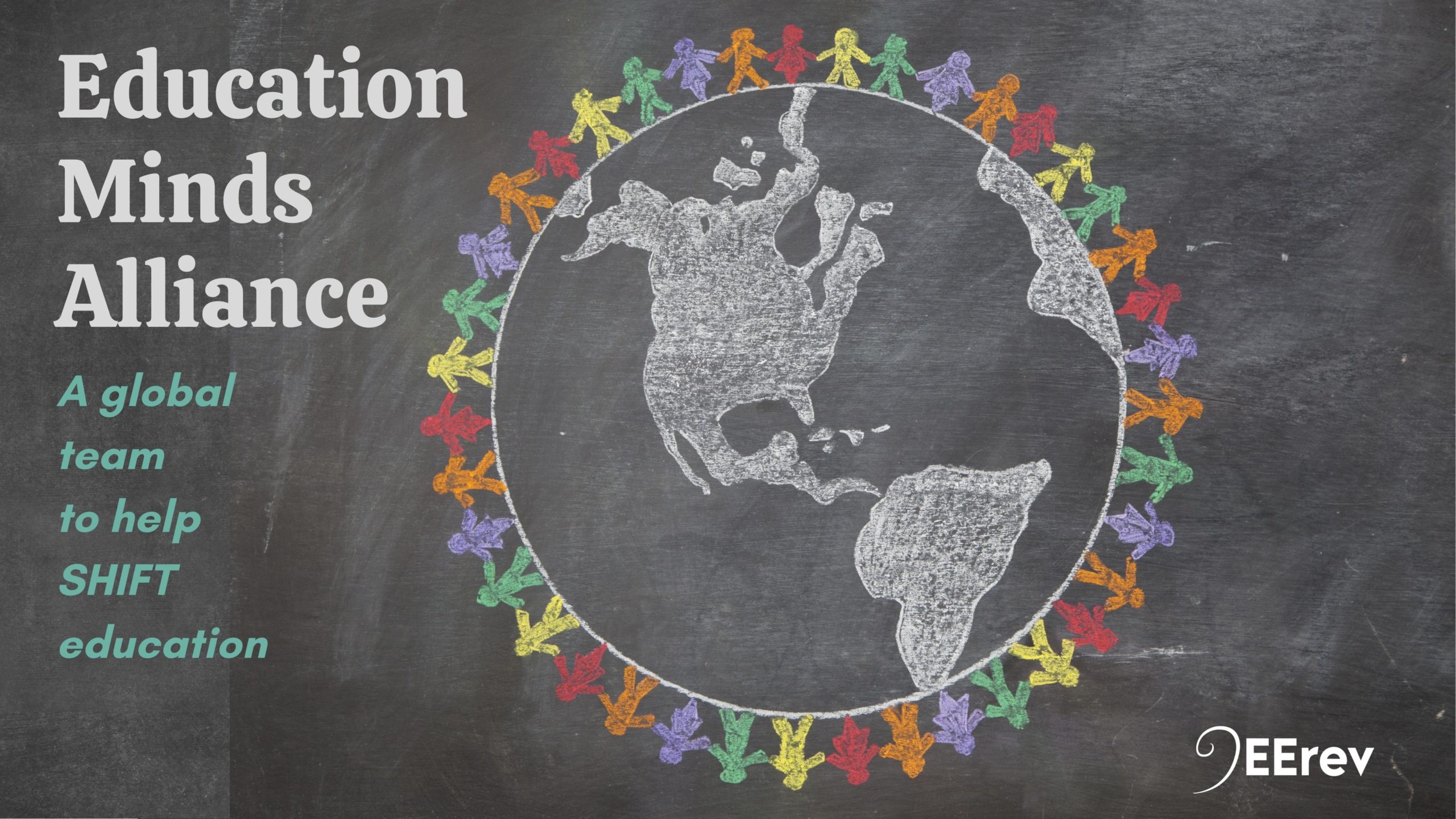
Level 1 Adventure
Education Minds Alliance
A GLOBAL TEAM TO HELP SHIFT EDUCATION:
Do you have a new-paradigm mindset about education? Are you someone who is already doing something, or researching something, that is working to help students and educators thrive?
We would love you to participate in a group of education game-changers from all over the world, who are working together to shift the education system into a healthy and empowering system for all.
Using a new-paradigm teaching and learning framework, and principles of the New Universal Declaration of Global Education, we INFLUENCE national and global education, so young people and educators have the best chance to thrive in school, career and life.
- Connect with other global members
- Create & contribute to the plan
- Take collaborative action
- 4th Saturday of the month on zoom
- 11:00am EST (New York City Time)
Level 1 Adventure
Current Events in Education Podcast
Many individuals are tired and exhausted of the challenges of the current education system. This is not to blame teachers, administrators or students. In fact, there is no one to blame. The system has been this way for so long that it is challenging to turn around something so large. But it is possible and it’s going to happen. Join us for a frank discussion about the current events in education and how we can perceive these events in a new light so we can begin to believe, say and do things differently. You can actually join this podcast as a participant or listen to us live or recorded on YouTube on Empowerment Education Revolution.
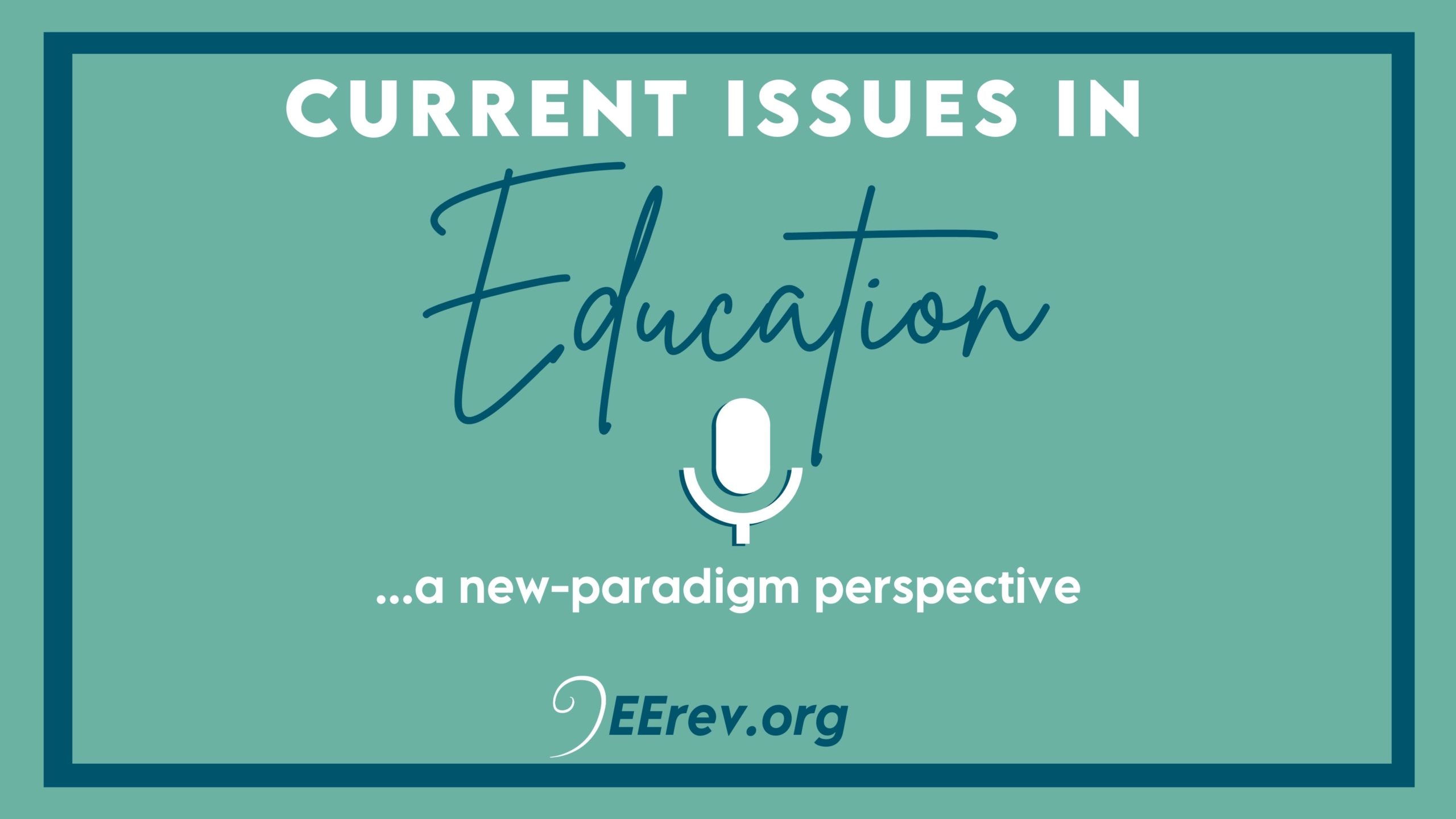
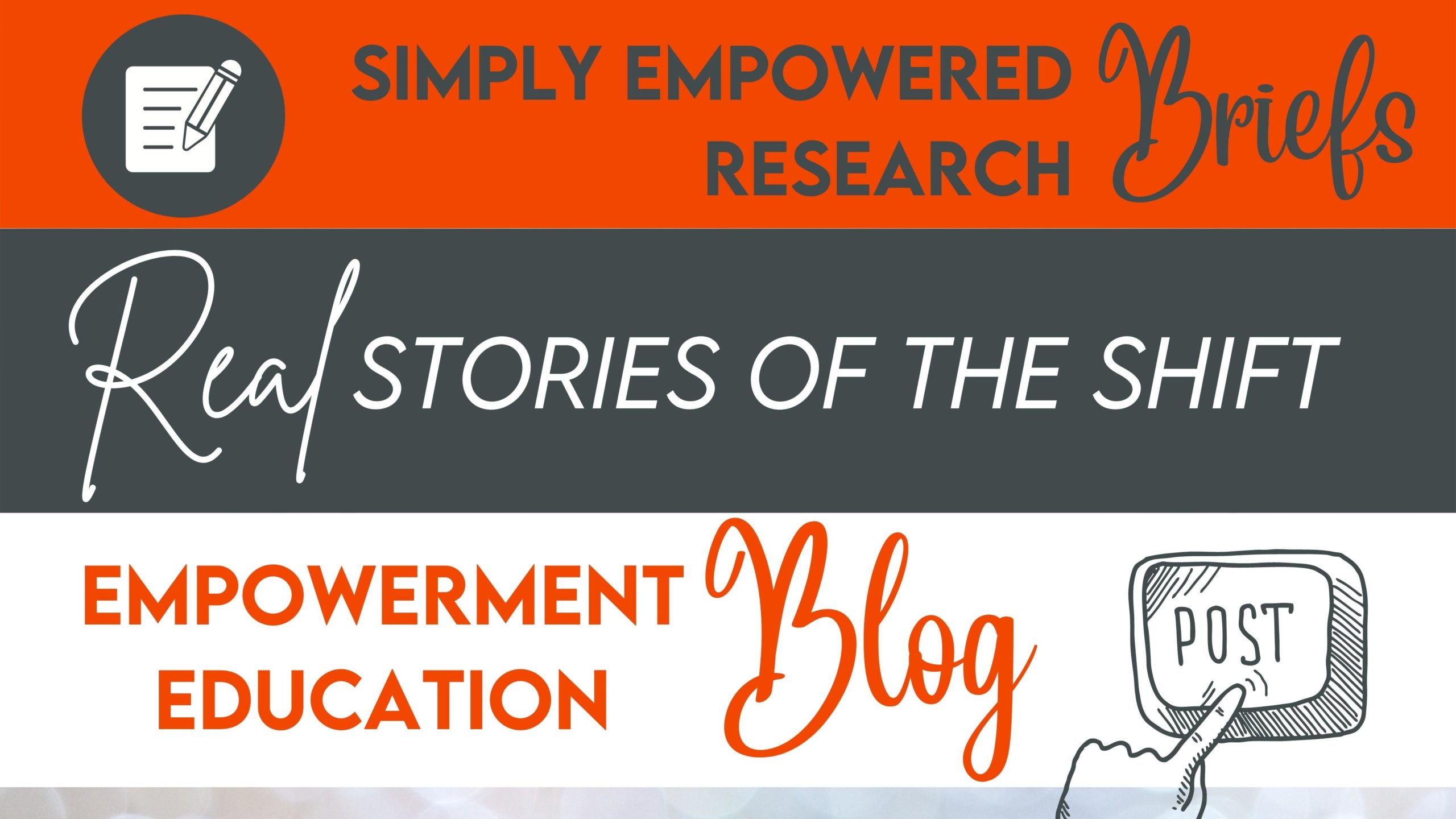
Level 1 Adventure
i.b.mee. Blogs
SIMPLY EMPOWERED RESEARCH BRIEFS: Check out our research briefs that summarize evidence-based studies and articles that show the new-paradigm of education in action. Our college interns and other research staff have summarized the research so you don’t have to. Read and learn the principles you can add to your classrooms, schools and life right away.
REAL STORIES OF THE SHIFT: Dive into real stories of educators, school leaders, coaches, parents, and students who have experienced Empowerment Education and are making the new-paradigm shift.
EMPOWERMENT EDUCATION BLOG: Brouse our Empowerment Education Blog to give you insight into the philosophy behind the new-paradigm of education. From why schools shootings are happening to the main concepts of healthy and empowering learning environments, they are filled with concepts that we have seen and used to ensure thriving students and educators.
All our programs and tools are based in evidence-based frameworks, theories and concepts that come from many learning domains, such as psychology, athletics, leadership, neuroscience, health and wellness, epigenetics, metaphysics, and many more. These blogs support educators apply new-paradigm, useful info to their classrooms, schools and life. If you have your own research or personal story that support this movement, please send them our way and we will write it up.
Level 2 Adventure
Empowerment Educators
Support Group
Join a safe, powerful conversation between teachers, school leaders, researchers and trauma-informed life and well-being coaches to discuss the challenges of shifting into the new-paradigm of education and using a coaching-approach. This hour is for you. What do you need?
- Meet and connect with a community of dedicated educators from all over the world who want to do things differently.
- Share your challenges and get some answers.
- Ask questions.
- Hear other stories of challenges and successes in classrooms and schools.
- Explore ways to manage students’ social, emotional, and behavioral challenges using the most up to date research-based, trauma informed practices.
- There is an option of group coaching during or after this time.
- No fees. Donations welcome at the end of each meeting.
- Facilitated by Meg Hanshaw PhD – Founder of i.b.mee. and Empowerment Education, or by one of i.b.mee.’s certified Empowerment Coaches


Level 2 Adventure
Quick Coaching
You teach, you lead, you coach, every day. Educators naturally use the art and science of Life and Well-being Coaching with each other, parents, and their students. Attend our 1-hour coaching-approach sessions to identify your natural coaching skills and expand on them by diving right into private coaching sessions in a safe learning environment and reflecting on the impact you are having. As you experience the personal empowerment of coaching, you will use it more and more. Come and have fun, connect with other educators, and grow your student coaching skills together!
Coaching-approach skills include:
- Deep listening
- Asking powerful questions
- Self-managing emotional triggers and stress
- Building connected relationships
Facilitated by Martin Richards – Director of i.b.mee.’s C4E program or by one of i.b.mee.’s certified Empowerment Coaches.
- No fees. Donations are welcome.
Level 2 Adventure
Listening from the Heart
Join other teachers and school administrators in a new-paradigm participatory experience about what it feels like to be seen, heard and valued, or to be listened to from the heart, which is the core skill of thriving. Many of us have never experienced the power of connection which is critical for a journey to becoming a professional coach in the classroom and school. This event brings self-awareness to your level of being able to listen from the heart, gives you a safe space to begin to practice, and prepares you for your gift of 4 life and well-being coaching sessions with a professional coach.
In this World Cafe type event, you will:
- Experience a trusting and connected learning environment.
- Practice listening from the heart.
- Make peer connections with educators all over the world in a friendly and safe atmosphere.
- Practice self-awareness.
- Learn what it is like for you to be coached by a professional life and well-being coach.
- Understand why life and well-being coaching is so powerful in education and how becoming a coach in the classroom and school is the key to a new-paradigm thriving learning environment.
Benefits of Listening from the Heart
- Increased levels of connection, trust, and collaboration
- Intrinsically valued solutions and outcomes
- Decreased stress levels
- Increased joy and satisfaction as an educator
No fees. Donations are welcome.


Level 2 Adventure
Coaching 4 Educators
Licensed Pre-K through 12th grade educators, recieve the GIFT of 4 life and well-being coaching sessions!
Lessen your stress as a teacher by taking us up on some real self-care support so you can feel healthier and more empowered. One of the first steppingstones to shift into the new-paradigm of thriving is to have the experience of slowing down and being seen, heard and valued. Being in a nonjudgmental empowered partnership with a professional, credentialed life coach, not being judged in any way, is critical.
There is nothing you have to do or prove when being coached, just be who and where you are as you move forward with what you want to experience. This makes teaching easier and more enjoyable. Students want to participate and speeds things up in the long run, because kids are in a state where they can learn. We are so used to going full speed ahead, that we are missing this most important ingredient, a critical coaching-approach experience that is the foundation of the shift into a new paradigm of education.
It’s challenging to give others what we haven’t received, and most of us haven’t very often received this type of support. Our Empowerment Education System of thriving is based on the art and science of connected coaching communication.
It is so important that we want you to have this experience for free. Many coaches from around the world also think you are worth it so they are volunteering 4 hours of their time to support you and the education system. We know that getting coached will inspire you to use more of a coach-approach in your work and life.
No Fees. Donations are welcome.
Level 2 Adventure
Empowerment Coaching Basics
Dive right into the four core skills of the coaching-approach and begin practicing with other educators. These 4 participatory Adventures will begin to develop the coaching communication skills of Listening from the Heart, Asking Powerful Questions, Self-Managing your Inner World, and Building Empowered Partnerships.
Empowerment Coaching Basics gives a common platform of language, skills and understanding about a powerful communication method that can be used by teachers, students and school administrators alike.
The way to learn to coach is to dive right in. Throughout the 4 online zoom events, you will hear descriptions of the four skills, practice them with a partner, then reflect on your progress in a safe and respectful space.
Online modules will also guide you to the most important concepts and research so you will have the theoretical base to why coaching works. You can go as deep as you want.
As you experience the personal empowerment of coaching, you will use it more and more. Come and have fun, connect with other educators, and grow your student coaching skills together!
Walk away with an Empowerment Coaching Certificate which means you have the skills to begin using the coaching approach in your classroom and see where it takes you!
These Empowerment Coaching Basics Adventure prepares educators to take their coaching practice to another level and continue to Level 3 where they can become a certified Empowerment Coach for the classroom/school as well as know how to implement the concepts and principles of Empowerment Education to shift our classrooms into ones where everyone thrives.
$40-$100 US dollars sliding scale. Your choice.
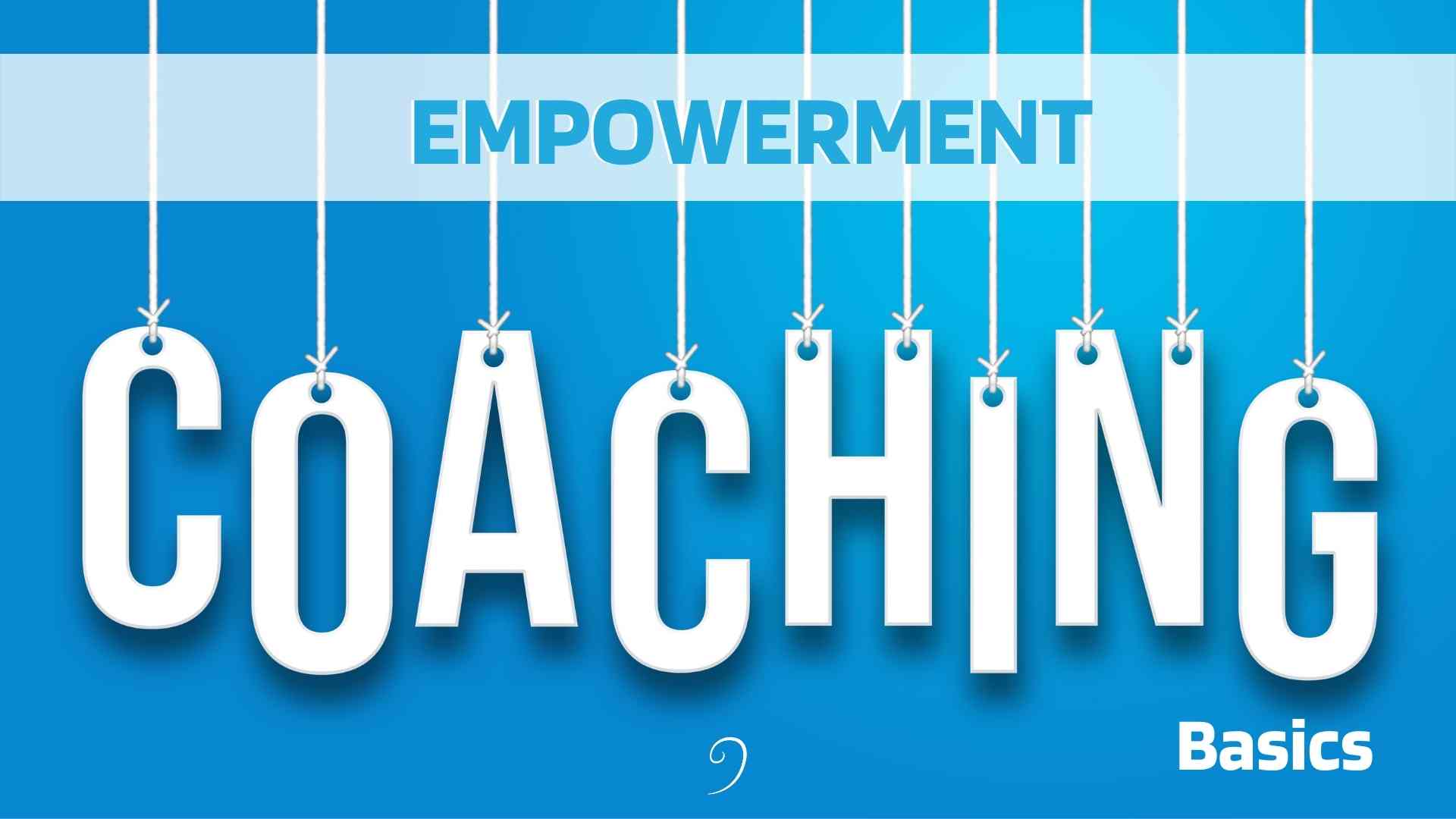

Level 2 Adventure
The Power of Coaching in Education Podcast
After 3 decades teaching and coaching in Primary, Secondary and Adult Education, Martin Richards, a certified professional coach, shares his coaching stories with you. He also invites guests who are either a certified coach in education or an educator already using the coaching-approach in their classroom.
In these podcasts you will learn:
- Why using the coaching-approach as an educator is so powerful whether a teacher or administrator.
- Why educators have turned to coaching as their full profession and why we need teachers as coaches to stay in education.
- What it means for an educator to be a coach in the classroom.
- How coaching powerfully aligns with teaching.
- How to support students in taking bold steps forwards with coaching.
- What coaching skills educators are already using with their students and peers.
- How the coaching-approach increase learning and productivity.
Level 3 Adventure
My W.E.L.L. Life -
The Ultimate Self-Care Experience
Coming Soon
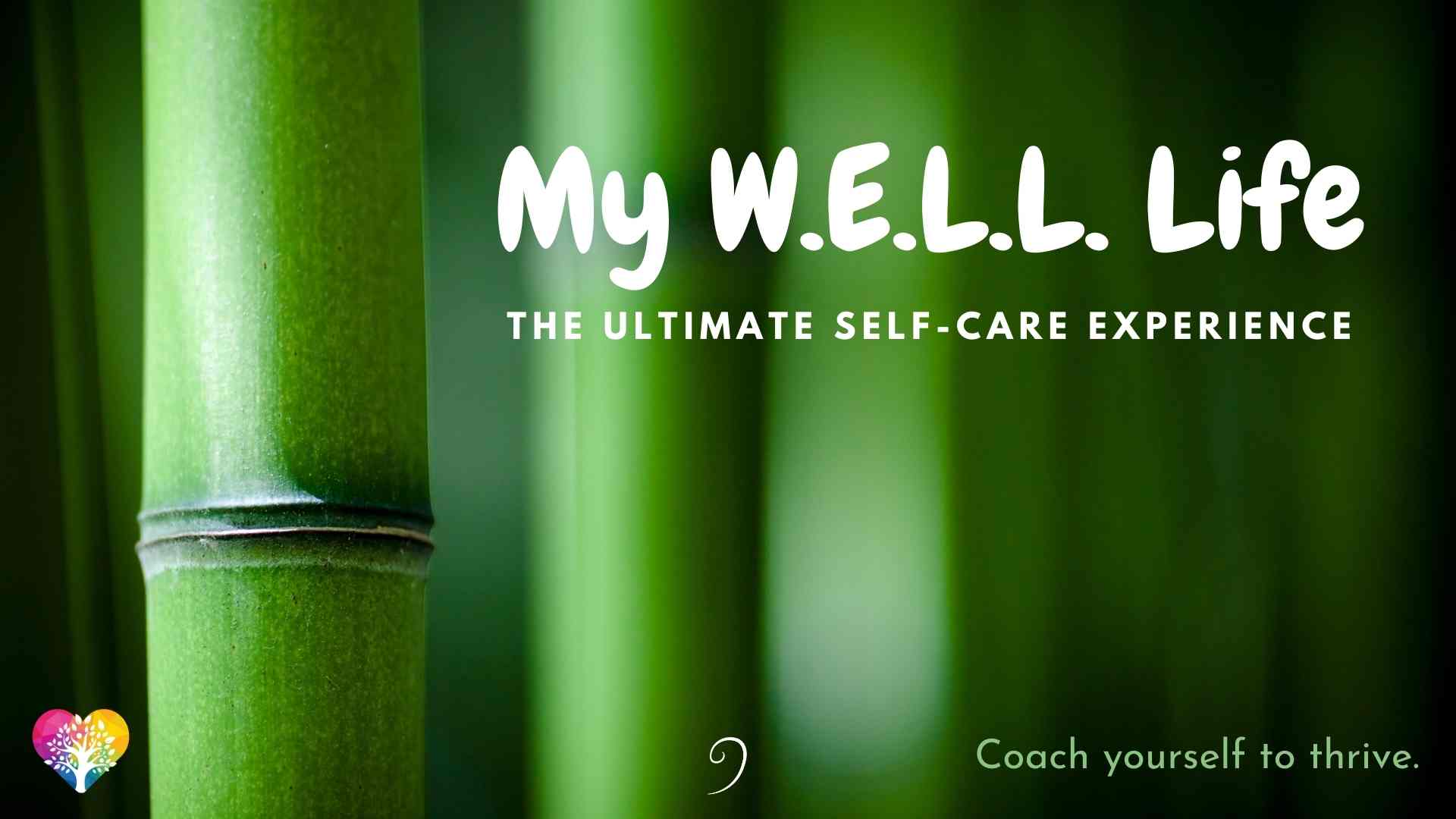
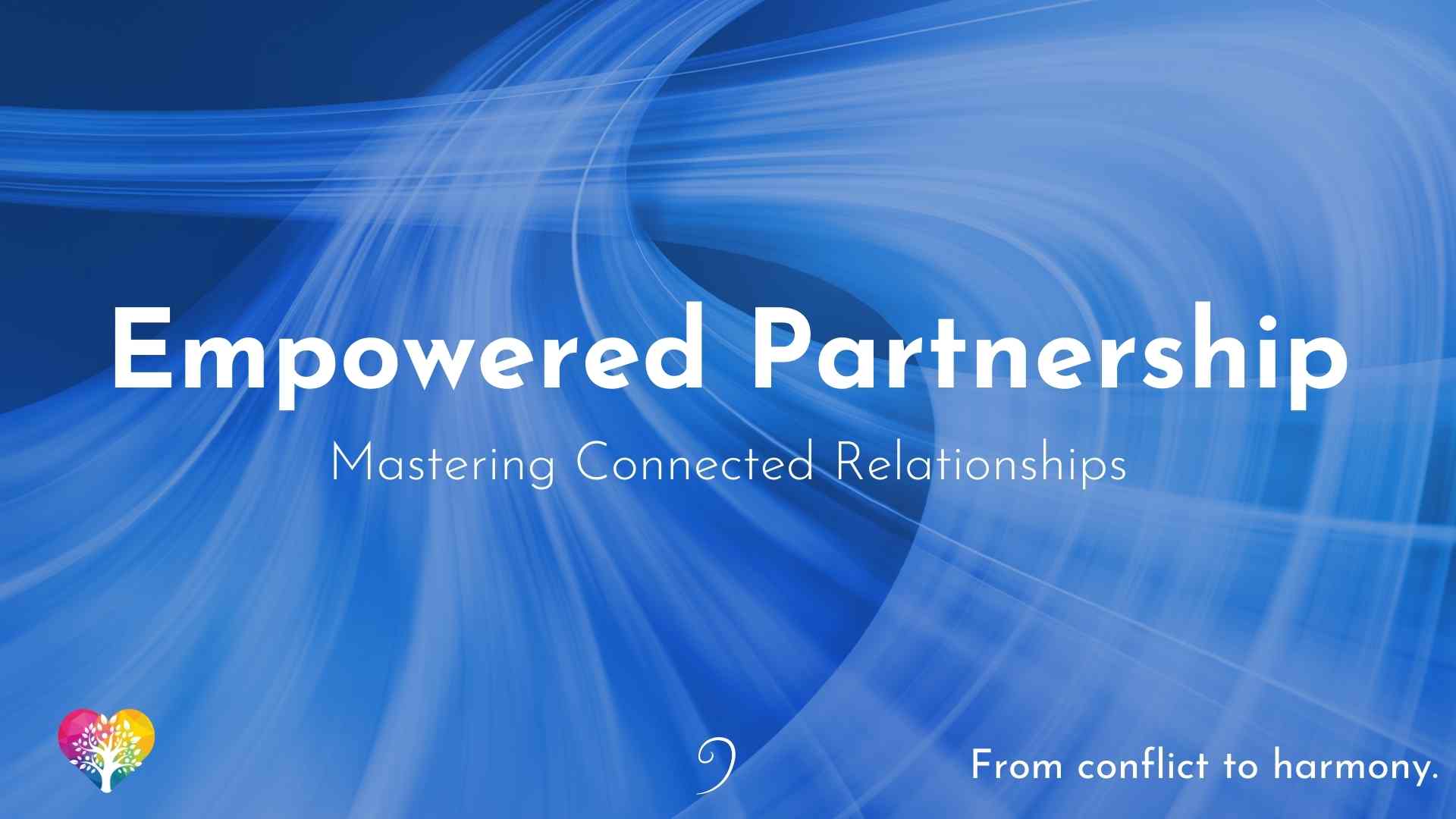
Level 3 Adventure
Empowered Partnership - Mastering Connected Relationships
Coming Soon
Level 3 Adventure
Unleash the Heart of the Leader
Coming Soon
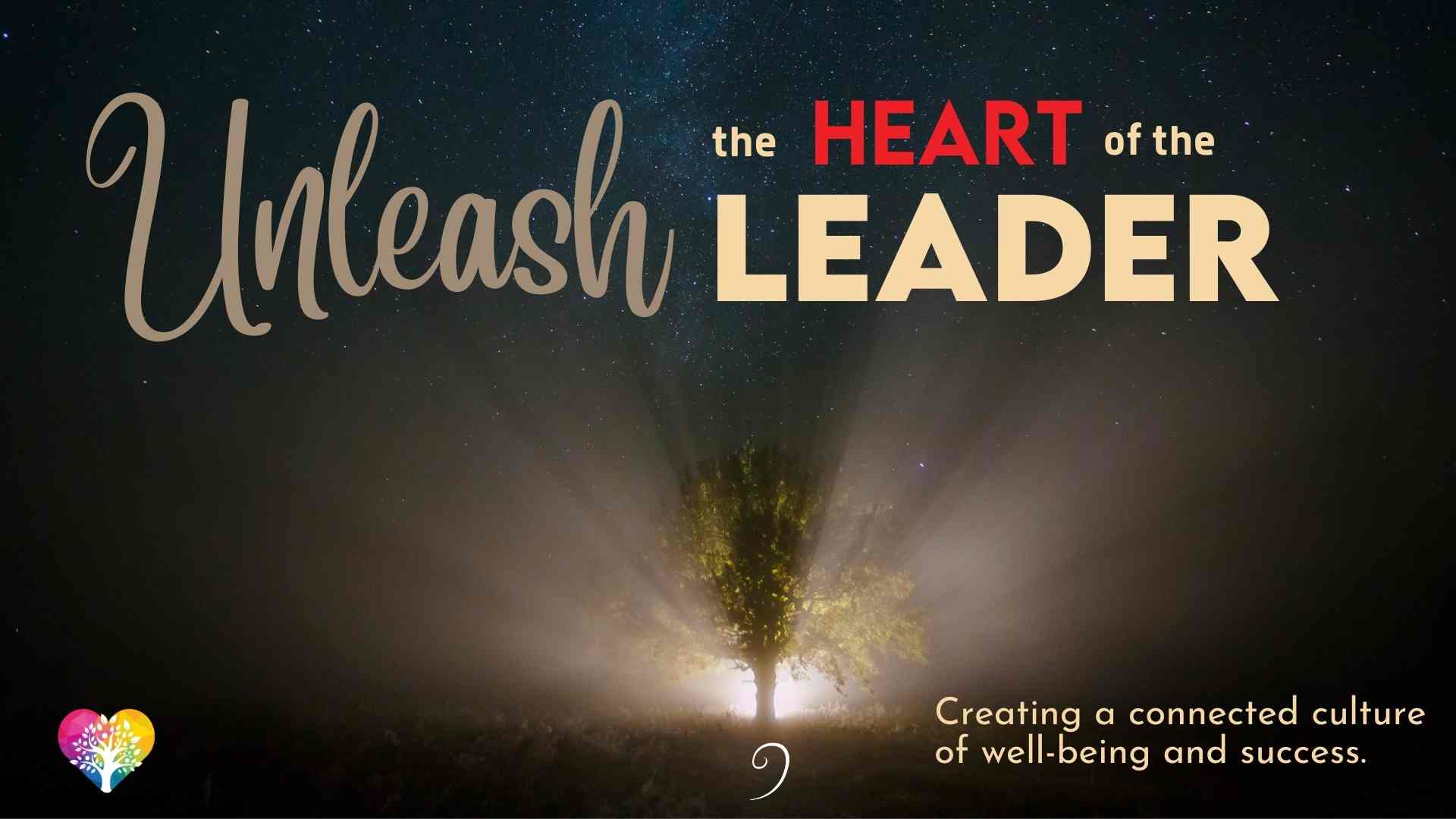
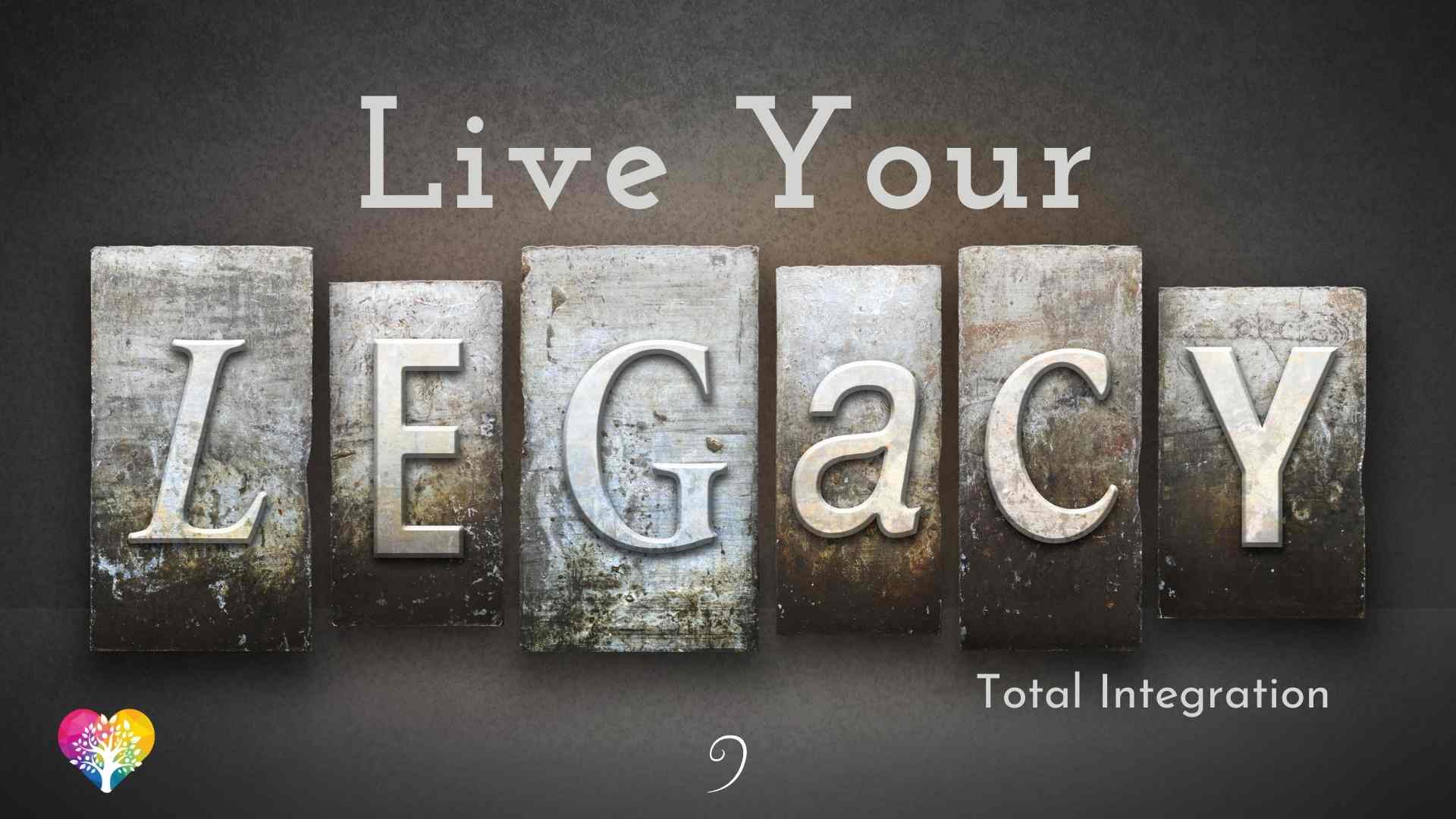
Level 3 Adventure
Live your Legacy - Total Integration
Coming Soon
Level 3 Adventure
The WAVE Process® Certification
Coming Soon
